
G - Geography, Anthropology, Recreation
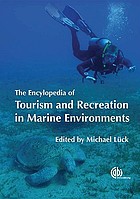 The Encyclopedia of Tourism and Recreation in Marine Environments
by
Combining the disciplines of marine scientists and tourism researchers, this encyclopedia brings together the terms, concepts and theories related to recreational and tourism activities in marine settings. Entries range from short definitions to medium and long articles.
The Encyclopedia of Tourism and Recreation in Marine Environments
by
Combining the disciplines of marine scientists and tourism researchers, this encyclopedia brings together the terms, concepts and theories related to recreational and tourism activities in marine settings. Entries range from short definitions to medium and long articles.
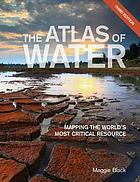 The Atlas of Water: Mapping the World's Most Critical Resource.
by
Climate change, population increase, and the demands made by the growing number of people adopting urban lifestyles and western diets threaten the world's supply of freshwater, edging us closer to a global water crisis, with dire implications for agriculture, the economy, the environment, and human health. Completely revised and updated, The Atlas of Water is a compelling visual guide to the state of this life-sustaining resource. Using vivid graphics, maps, and charts, it explores the complex human interaction with water around the world. This vibrant atlas addresses all the pressing issues concerning water, from water shortages and excessive demand, to dams, pollution, and privatization, all considered in terms of the growing threat of an increasingly unpredictable climate. It also outlines critical tools for managing water, providing safe access to water, and preserving the future of the world's water supply.
The Atlas of Water: Mapping the World's Most Critical Resource.
by
Climate change, population increase, and the demands made by the growing number of people adopting urban lifestyles and western diets threaten the world's supply of freshwater, edging us closer to a global water crisis, with dire implications for agriculture, the economy, the environment, and human health. Completely revised and updated, The Atlas of Water is a compelling visual guide to the state of this life-sustaining resource. Using vivid graphics, maps, and charts, it explores the complex human interaction with water around the world. This vibrant atlas addresses all the pressing issues concerning water, from water shortages and excessive demand, to dams, pollution, and privatization, all considered in terms of the growing threat of an increasingly unpredictable climate. It also outlines critical tools for managing water, providing safe access to water, and preserving the future of the world's water supply.
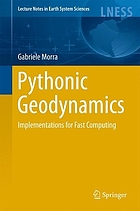 Pythonic geodynamics : implementations for fast computing
by
This book addresses students and young researchers who want to learn to use numerical modeling to solve problems in geodynamics. Intended as an easy-to-use and self-learning guide, readers only need a basic background in calculus to approach most of the material. The book difficulty increases very gradually, through four distinct parts. The first is an introduction to the Python techniques necessary to visualize and run vectorial calculations. The second is an overview with several examples on classical Mechanics with examples taken from standard introductory physics books. The third part is a detailed description of how to write Lagrangian, Eulerian and Particles in Cell codes for solving linear and non-linear continuum mechanics problems. Finally the last one address advanced techniques like tree-codes, Boundary Elements, and illustrates several applications to Geodynamics. The entire book is organized around numerous examples in Python, aiming at encouraging the reader to le arn by experimenting and experiencing, not by theory.
Pythonic geodynamics : implementations for fast computing
by
This book addresses students and young researchers who want to learn to use numerical modeling to solve problems in geodynamics. Intended as an easy-to-use and self-learning guide, readers only need a basic background in calculus to approach most of the material. The book difficulty increases very gradually, through four distinct parts. The first is an introduction to the Python techniques necessary to visualize and run vectorial calculations. The second is an overview with several examples on classical Mechanics with examples taken from standard introductory physics books. The third part is a detailed description of how to write Lagrangian, Eulerian and Particles in Cell codes for solving linear and non-linear continuum mechanics problems. Finally the last one address advanced techniques like tree-codes, Boundary Elements, and illustrates several applications to Geodynamics. The entire book is organized around numerous examples in Python, aiming at encouraging the reader to le arn by experimenting and experiencing, not by theory.
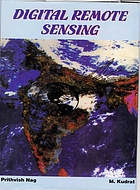 Digital Remote Sensing
by
Every culture is guided by a philosophy or belief system. These beliefs influence every aspect of an individual's life, including his identity and concept of self. This book explores the Hindu, Buddhist, Jaina, Zoroastrian, lslamic and Sikh belief systems in order to comprehend their percepts on the concept of self, their perspectives on emotions, and the implications of these for the individual and society. ln addition, o review of contemporary psychology, incorporating views from evolutionary psychology, biological psychology, neuropsychology, cognitive psychology, and social psychology, in.
Digital Remote Sensing
by
Every culture is guided by a philosophy or belief system. These beliefs influence every aspect of an individual's life, including his identity and concept of self. This book explores the Hindu, Buddhist, Jaina, Zoroastrian, lslamic and Sikh belief systems in order to comprehend their percepts on the concept of self, their perspectives on emotions, and the implications of these for the individual and society. ln addition, o review of contemporary psychology, incorporating views from evolutionary psychology, biological psychology, neuropsychology, cognitive psychology, and social psychology, in.
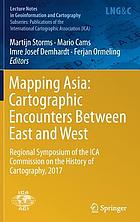 Mapping Asia : cartographic encounters between East and West : Regional Symposium of the ICA Commission on the history of cartography, 2017
by
This proceedings book presents the first-ever cross-disciplinary analysis of 16th-20th century South, East, and Southeast Asian cartography. The central theme of the conference was the mutual influence of Western and Asian cartographic traditions, and the focus was on points of contact between Western and Asian cartographic history. Geographically, the topics were limited to South Asia, East Asia and Southeast Asia, with special attention to India, China, Japan, Korea and Indonesia. Topics addressed included Asia's place in the world, the Dutch East India Company, toponymy, Philipp Franz von Siebold, maritime cartography, missionary mapping and cadastral mapping.
Mapping Asia : cartographic encounters between East and West : Regional Symposium of the ICA Commission on the history of cartography, 2017
by
This proceedings book presents the first-ever cross-disciplinary analysis of 16th-20th century South, East, and Southeast Asian cartography. The central theme of the conference was the mutual influence of Western and Asian cartographic traditions, and the focus was on points of contact between Western and Asian cartographic history. Geographically, the topics were limited to South Asia, East Asia and Southeast Asia, with special attention to India, China, Japan, Korea and Indonesia. Topics addressed included Asia's place in the world, the Dutch East India Company, toponymy, Philipp Franz von Siebold, maritime cartography, missionary mapping and cadastral mapping.
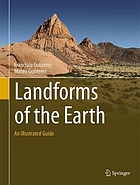 Landforms of the Earth : an illustrated guide
by
This is a highly illustrated book with each landform being described with the following structure: (1) Main characteristics, including geometric, morphometric and sedimentological features. (2) Genetic processes and controlling factors. (3) Different typologies if applicable. (4) Additional comments related to various relevant aspects such us environmental implications or geographical distribution. Image visualization of landforms is essential for learning geomorphology and stimulating the interest in this field-based subject; a picture is worth a thousand words. Consequently, the book constitutes a valuable educational resource for every university student enrolled in courses related with earth surface processes and landforms (e.g. Geomorphology, Physical Geography, Geology, Geohazards, Environmental Sciences.). The book is also attractive to travellers and people keen on nature who want to know about the terminology and origin of the landforms they encounter in their trips. In many cases, the geomorphological features constitute the main asset of first-class protected areas (e.g., UNESCO World Heritage Sites, National Parks).
Landforms of the Earth : an illustrated guide
by
This is a highly illustrated book with each landform being described with the following structure: (1) Main characteristics, including geometric, morphometric and sedimentological features. (2) Genetic processes and controlling factors. (3) Different typologies if applicable. (4) Additional comments related to various relevant aspects such us environmental implications or geographical distribution. Image visualization of landforms is essential for learning geomorphology and stimulating the interest in this field-based subject; a picture is worth a thousand words. Consequently, the book constitutes a valuable educational resource for every university student enrolled in courses related with earth surface processes and landforms (e.g. Geomorphology, Physical Geography, Geology, Geohazards, Environmental Sciences.). The book is also attractive to travellers and people keen on nature who want to know about the terminology and origin of the landforms they encounter in their trips. In many cases, the geomorphological features constitute the main asset of first-class protected areas (e.g., UNESCO World Heritage Sites, National Parks).
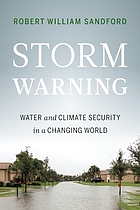 Storm warning : water and climate security in a changing world
by
"United Nations water expert Robert William Sandford takes the reader on a thought-provoking tour of a world where water, weather, cities, landscapes, economies, even entire cultures, are dramatically impacted by a changing climate. Human beings and industrial-based society are changing the composition of our planet's atmosphere and causing it to warm at an unnatural and oftentimes astonishingly rapid rate. Much of that warmth is being absorbed by water, which as a result is moving through the global hydrological cycle faster and in unprecedented ways. A warmer atmosphere carries more water vapour, which means that as temperatures continue to rise, storms will become more intense, last longer and cause more damage to our towns, cities and vital infrastructure. On the other side of the hydro-climate coin, we can also expect deeper and more persistent droughts throughout the world, resulting in dramatic crop losses, difficult economic outcomes and fundamental alterations to landscape. This highly considered, accessible and readable book explains how changes in the water cycle have already begun to affect how we think about and value water security and climate stability and what we can do to ensure a sustainable future for our children and grandchildren."-- Provided by publisher.
Storm warning : water and climate security in a changing world
by
"United Nations water expert Robert William Sandford takes the reader on a thought-provoking tour of a world where water, weather, cities, landscapes, economies, even entire cultures, are dramatically impacted by a changing climate. Human beings and industrial-based society are changing the composition of our planet's atmosphere and causing it to warm at an unnatural and oftentimes astonishingly rapid rate. Much of that warmth is being absorbed by water, which as a result is moving through the global hydrological cycle faster and in unprecedented ways. A warmer atmosphere carries more water vapour, which means that as temperatures continue to rise, storms will become more intense, last longer and cause more damage to our towns, cities and vital infrastructure. On the other side of the hydro-climate coin, we can also expect deeper and more persistent droughts throughout the world, resulting in dramatic crop losses, difficult economic outcomes and fundamental alterations to landscape. This highly considered, accessible and readable book explains how changes in the water cycle have already begun to affect how we think about and value water security and climate stability and what we can do to ensure a sustainable future for our children and grandchildren."-- Provided by publisher.
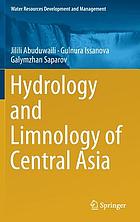 Hydrology and Limnology of Central Asia
by
This book highlights the development of lake systems and water reservoirs as well as the impact of climate change on water resources in Central Asian countries. It provides information on the genesis of lake basins, physical and chemical properties of water in lakes, and the hydrological regimes (water balance and fluctuation levels) of lakes of Central Asia and Xinjiang. The book is useful for scientists and researchers whose work focuses on lakes and the use of natural resources, irrigation, hydropower and water supply, as well as for students and planners.
Hydrology and Limnology of Central Asia
by
This book highlights the development of lake systems and water reservoirs as well as the impact of climate change on water resources in Central Asian countries. It provides information on the genesis of lake basins, physical and chemical properties of water in lakes, and the hydrological regimes (water balance and fluctuation levels) of lakes of Central Asia and Xinjiang. The book is useful for scientists and researchers whose work focuses on lakes and the use of natural resources, irrigation, hydropower and water supply, as well as for students and planners.
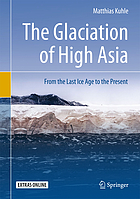 The Glaciation of High Asia: from the last ice age to the present
by
This book summarizes four decades of glacial-geomorphological field research in Central and High Asia in an attempt to draw a significant link between Quaternary science research and paleoclimatology. Based on the latest geomorphological findings, this study offers a large-scale reconstruction of the Last Glacial Maximum (LGM) that in High Asia encompassed a total expanse of no less than three million km2, including the Central Tibetan plateau with 2.4 million km2. The author offers a complete reconstruction of the Late Glacial, Holocene, and Historical glacier advances as well as the successive Postglacial ablation stages extending to the present. Taken together, the findings presented here provide the first insights into a global-climatic impact of the Last Glacial Maximum in Central and High Asia with respect to the current interglacial stage. The comparative data analyses point to an inland glaciation at subtropical latitude covering an area larger than the Nordic inland glaciation in Greenland. These insights are facilitated by a methodological approach, unprecedented in modern Quaternary research, that combines high-quality panoramic photography with high-resolution satellite imagery. This combination of terrestrial and aerial perspectives enables scientists and readers alike to visualize the geomorphology of the landscape as a three-dimensional space. The author's successful union of digital big data resources with classical geomorphological analysis offers an exciting new template for future research in Quaternary science and related fields.
The Glaciation of High Asia: from the last ice age to the present
by
This book summarizes four decades of glacial-geomorphological field research in Central and High Asia in an attempt to draw a significant link between Quaternary science research and paleoclimatology. Based on the latest geomorphological findings, this study offers a large-scale reconstruction of the Last Glacial Maximum (LGM) that in High Asia encompassed a total expanse of no less than three million km2, including the Central Tibetan plateau with 2.4 million km2. The author offers a complete reconstruction of the Late Glacial, Holocene, and Historical glacier advances as well as the successive Postglacial ablation stages extending to the present. Taken together, the findings presented here provide the first insights into a global-climatic impact of the Last Glacial Maximum in Central and High Asia with respect to the current interglacial stage. The comparative data analyses point to an inland glaciation at subtropical latitude covering an area larger than the Nordic inland glaciation in Greenland. These insights are facilitated by a methodological approach, unprecedented in modern Quaternary research, that combines high-quality panoramic photography with high-resolution satellite imagery. This combination of terrestrial and aerial perspectives enables scientists and readers alike to visualize the geomorphology of the landscape as a three-dimensional space. The author's successful union of digital big data resources with classical geomorphological analysis offers an exciting new template for future research in Quaternary science and related fields.
 Encyclopedia of ocean sciences. Volume 1, Marine biogeochemisty
by
Encyclopedia of ocean sciences. Volume 1, Marine biogeochemisty
by
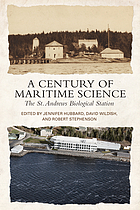 A century of maritime science : the St. Andrews Biological Station
by
"Located on the Bay of Fundy, the St. Andrews Biological Station is Canada's oldest permanent marine research institution. A Century of Maritime Science reviews the fisheries, environmental, oceanographic, and aquaculture research conducted over the last hundred years at St. Andrews from the perspective of the participating scientists. Introductory essays by two leading historians of science situate the work at St. Andrews within their historical context. With topics including the contributions of women to the early study of marine biology in Canada; the study of scallops, Atlantic salmon, and paralytic shellfish poisoning; and the development of underwater camera technology, A Century of Maritime Science offers a captivating mixture of first-hand reminiscences, scientific expertise, and historical analysis."-- Provided by publisher.
A century of maritime science : the St. Andrews Biological Station
by
"Located on the Bay of Fundy, the St. Andrews Biological Station is Canada's oldest permanent marine research institution. A Century of Maritime Science reviews the fisheries, environmental, oceanographic, and aquaculture research conducted over the last hundred years at St. Andrews from the perspective of the participating scientists. Introductory essays by two leading historians of science situate the work at St. Andrews within their historical context. With topics including the contributions of women to the early study of marine biology in Canada; the study of scallops, Atlantic salmon, and paralytic shellfish poisoning; and the development of underwater camera technology, A Century of Maritime Science offers a captivating mixture of first-hand reminiscences, scientific expertise, and historical analysis."-- Provided by publisher.
 Philip's Guide to the Oceans
by
An authoritative and richly illustrated guide to the many facets of the world's oceans and seas. The first five sections describe the genesis and evolution of the oceans, the history of exploration, leisure on the oceans, sealife, and ocean resources.
Philip's Guide to the Oceans
by
An authoritative and richly illustrated guide to the many facets of the world's oceans and seas. The first five sections describe the genesis and evolution of the oceans, the history of exploration, leisure on the oceans, sealife, and ocean resources.
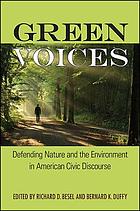 Green Voices
by
The written works of nature's leading advocates--from Charles Sumner and John Muir to Rachel Carson and President Jimmy Carter, to name a few--have been the subject of many texts, but their speeches remain relatively unknown or unexamined. Green Voices aims to redress this situation. After all, when it comes to the leaders, heroes, and activists of the environmental movement, their speeches formed part of the fertile earth from which uniquely American environmental expectations, assumptions, and norms germinated and grew. Despite having in common a definitively rhetorical focus, the contributions in this book reflect a variety of methods and approaches. Some concentrate on a single speaker and a single speech. Others look at several speeches. Some are historical in orientation, while others are more theoretical. In other words, this collection examines the broad sweep of US environmental history from the perspective of our most famous and influential environmental figures.
Green Voices
by
The written works of nature's leading advocates--from Charles Sumner and John Muir to Rachel Carson and President Jimmy Carter, to name a few--have been the subject of many texts, but their speeches remain relatively unknown or unexamined. Green Voices aims to redress this situation. After all, when it comes to the leaders, heroes, and activists of the environmental movement, their speeches formed part of the fertile earth from which uniquely American environmental expectations, assumptions, and norms germinated and grew. Despite having in common a definitively rhetorical focus, the contributions in this book reflect a variety of methods and approaches. Some concentrate on a single speaker and a single speech. Others look at several speeches. Some are historical in orientation, while others are more theoretical. In other words, this collection examines the broad sweep of US environmental history from the perspective of our most famous and influential environmental figures.
 Environmental Crises in Central Asia
by
Environmental conditions do not exist in a vacuum. They are influenced by science, politics, history, public policy, culture, economics, public attitudes, and competing priorities, as well as past human decisions. In the case of Central Asia, such Soviet-era decisions include irrigation systems and physical infrastructure that are now crumbling, mine tailings that leach pollutants into soil and groundwater, and abandoned factories that are physically decrepit and contaminated with toxic chemicals. Environmental Crises in Central Asia highlights major environmental challenges confronting the region's former Soviet republics: Kazakhstan, Kyrgyzstan, Tajikistan, Turkmenistan, and Uzbekistan. They include threats to the Caspian and Aral seas, the impact of climate change on glaciers, desertification, deforestation, destruction of habitat and biodiversity, radioactive and hazardous wastes, water quality and supply, energy exploration and development, pesticides and food security, and environmental health. The ramifications of these challenges cross national borders and may affect economic, political, and cultural relationships on a vast geographic scale. At the same time, the region's five governments have demonstrated little resolve to address these complex challenges. This book is a valuable multi-disciplinary resource for academics, scholars, and policymakers in environmental sciences, geography, political science, natural resources, mass communications, public health, and economics.
Environmental Crises in Central Asia
by
Environmental conditions do not exist in a vacuum. They are influenced by science, politics, history, public policy, culture, economics, public attitudes, and competing priorities, as well as past human decisions. In the case of Central Asia, such Soviet-era decisions include irrigation systems and physical infrastructure that are now crumbling, mine tailings that leach pollutants into soil and groundwater, and abandoned factories that are physically decrepit and contaminated with toxic chemicals. Environmental Crises in Central Asia highlights major environmental challenges confronting the region's former Soviet republics: Kazakhstan, Kyrgyzstan, Tajikistan, Turkmenistan, and Uzbekistan. They include threats to the Caspian and Aral seas, the impact of climate change on glaciers, desertification, deforestation, destruction of habitat and biodiversity, radioactive and hazardous wastes, water quality and supply, energy exploration and development, pesticides and food security, and environmental health. The ramifications of these challenges cross national borders and may affect economic, political, and cultural relationships on a vast geographic scale. At the same time, the region's five governments have demonstrated little resolve to address these complex challenges. This book is a valuable multi-disciplinary resource for academics, scholars, and policymakers in environmental sciences, geography, political science, natural resources, mass communications, public health, and economics.
 City of Forests, City of Farms: sustainability planning for New York City's nature
by
City of Forests, City of Farms: sustainability planning for New York City's nature
by
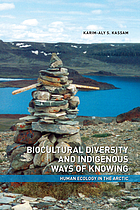 Biocultural Diversity and Indigenous Ways of Knowing
by
Dramatic challenges face human civilization everywhere. Relations between human beings and their environment are in peril, with mounting threats to both biological diversity of life on earth and cultural diversity of human communities. The peoples of the Circumpolar Arctic are at the forefront of these challenges and lead the way in seeking meaningful responses. In Biocultural Diversity and Indigenous Ways of Knowing, Karim-Aly Kassam positions the Arctic and sub-Arctic as a homeland rather than simply as a frontier for resource exploitation. Kassam aims to empirically and theoretically illustrate the synthesis between the cultural and the biological, using human ecology as a conceptual and analytical lens. Drawing on research carried out in partnership with indigenous northern communities, three case studies illustrate that subsistence hunting and gathering are not relics of an earlier era but rather remain essential to both cultural diversity and to human survival. This book deals with contemporary issues such as climate change, Indigenous knowledge, and the impact of natural resource extraction. It is a narrative of community-based research, in the service of the communities for the benefit of the communities. It provides resource-based industry, policy makers, and students with an alternative way of engaging indigenous communities and transforming our perspective on conservation of ecological and cultural diversity.
Biocultural Diversity and Indigenous Ways of Knowing
by
Dramatic challenges face human civilization everywhere. Relations between human beings and their environment are in peril, with mounting threats to both biological diversity of life on earth and cultural diversity of human communities. The peoples of the Circumpolar Arctic are at the forefront of these challenges and lead the way in seeking meaningful responses. In Biocultural Diversity and Indigenous Ways of Knowing, Karim-Aly Kassam positions the Arctic and sub-Arctic as a homeland rather than simply as a frontier for resource exploitation. Kassam aims to empirically and theoretically illustrate the synthesis between the cultural and the biological, using human ecology as a conceptual and analytical lens. Drawing on research carried out in partnership with indigenous northern communities, three case studies illustrate that subsistence hunting and gathering are not relics of an earlier era but rather remain essential to both cultural diversity and to human survival. This book deals with contemporary issues such as climate change, Indigenous knowledge, and the impact of natural resource extraction. It is a narrative of community-based research, in the service of the communities for the benefit of the communities. It provides resource-based industry, policy makers, and students with an alternative way of engaging indigenous communities and transforming our perspective on conservation of ecological and cultural diversity.
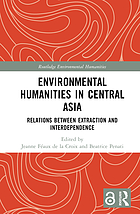 Environmental Humanities in Central Asia Relations Between Extraction and Interdependence
by
This book is the first collection to showcase the flourishing field of environmental humanities in Central Asia. A region larger than Europe, Central Asia possesses an astounding range of environments, from deserts to glaciated peaks. The volume brings into conversation scholarship from history to social anthropology, demonstrating the contribution that interdisciplinary and engaged research offers to many urgent issues in the region: from the history of conservationism to the tactics of environmental movements, from literary engagements with 'pure nature' to the impact of fossil fuel extraction. The collection focuses on the Central Asian republics of the former USSR, where a complex layering of nomadic and sedentary, Turkic and Persianate, Islamic and Soviet cultures ends up affecting human relations with distinct environments. Featuring state-of-the-art contributions, the book enquires into human-environment relations through a broad-brush typology of interactive modes: to extract, protect, enspirit and fear. Broadening the scope of analysis beyond a consideration of power, the authors bring into focus alternative local cosmologies and the unintended consequences of environmental policy. The volume highlights scholarship from within Central Asia as well as expertise elsewhere, offering readers diverse modes of knowledge-production in the environmental humanities. This book is an important resource for researchers and students of the environmental humanities, sustainability, history, politics, anthropology and geography of Asia, as well as Soviet and Post-Soviet studies.
Environmental Humanities in Central Asia Relations Between Extraction and Interdependence
by
This book is the first collection to showcase the flourishing field of environmental humanities in Central Asia. A region larger than Europe, Central Asia possesses an astounding range of environments, from deserts to glaciated peaks. The volume brings into conversation scholarship from history to social anthropology, demonstrating the contribution that interdisciplinary and engaged research offers to many urgent issues in the region: from the history of conservationism to the tactics of environmental movements, from literary engagements with 'pure nature' to the impact of fossil fuel extraction. The collection focuses on the Central Asian republics of the former USSR, where a complex layering of nomadic and sedentary, Turkic and Persianate, Islamic and Soviet cultures ends up affecting human relations with distinct environments. Featuring state-of-the-art contributions, the book enquires into human-environment relations through a broad-brush typology of interactive modes: to extract, protect, enspirit and fear. Broadening the scope of analysis beyond a consideration of power, the authors bring into focus alternative local cosmologies and the unintended consequences of environmental policy. The volume highlights scholarship from within Central Asia as well as expertise elsewhere, offering readers diverse modes of knowledge-production in the environmental humanities. This book is an important resource for researchers and students of the environmental humanities, sustainability, history, politics, anthropology and geography of Asia, as well as Soviet and Post-Soviet studies.
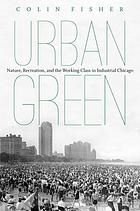 Urban Green: nature, recreation, and the working class in industrial Chicago
by
In early twentieth-century America, affluent city-dwellers made a habit of venturing out of doors and vacationing in resorts and national parks. Yet the rich and the privileged were not the only ones who sought respite in nature. In this pathbreaking book, historian Colin Fisher demonstrates that working-class white immigrants and African Americans in rapidly industrializing Chicago also fled the urban environment during their scarce leisure time. If they had the means, they traveled to wilderness parks just past the city limits as well as to rural resorts in Wisconsin and Michigan. But lacking time and money, they most often sought out nature within the city itself--at urban parks and commercial groves, along the Lake Michigan shore, even in vacant lots. Chicagoans enjoyed a variety of outdoor recreational activities in these green spaces, and they used them to forge ethnic and working-class community. While narrating a crucial era in the history of Chicago's urban development, Fisher makes important interventions in debates about working-class leisure, the history of urban parks, environmental justice, the African American experience, immigration history, and the cultural history of nature.
Urban Green: nature, recreation, and the working class in industrial Chicago
by
In early twentieth-century America, affluent city-dwellers made a habit of venturing out of doors and vacationing in resorts and national parks. Yet the rich and the privileged were not the only ones who sought respite in nature. In this pathbreaking book, historian Colin Fisher demonstrates that working-class white immigrants and African Americans in rapidly industrializing Chicago also fled the urban environment during their scarce leisure time. If they had the means, they traveled to wilderness parks just past the city limits as well as to rural resorts in Wisconsin and Michigan. But lacking time and money, they most often sought out nature within the city itself--at urban parks and commercial groves, along the Lake Michigan shore, even in vacant lots. Chicagoans enjoyed a variety of outdoor recreational activities in these green spaces, and they used them to forge ethnic and working-class community. While narrating a crucial era in the history of Chicago's urban development, Fisher makes important interventions in debates about working-class leisure, the history of urban parks, environmental justice, the African American experience, immigration history, and the cultural history of nature.
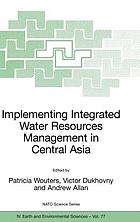 Implementing Integrated Water Resources Management in Central Asia
by
This volume reproduces the proceedings of an Advanced Research Workshop held in Bishkek, which brought together all the most senior water resource managers in Central Asia, from Ministers to local experts and eminent academics. It describes, from the practitioner's perspective, the problems encountered in the region's efforts to implement integrated water resources management and solutions that have been put in place in order to address these.
Implementing Integrated Water Resources Management in Central Asia
by
This volume reproduces the proceedings of an Advanced Research Workshop held in Bishkek, which brought together all the most senior water resource managers in Central Asia, from Ministers to local experts and eminent academics. It describes, from the practitioner's perspective, the problems encountered in the region's efforts to implement integrated water resources management and solutions that have been put in place in order to address these.
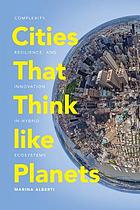 Cities That Think Like Planets
by
As human activity and environmental change come to be increasingly recognized as intertwined phenomena on a rapidly urbanizing planet, the field of urban ecology has risen to offer useful ways of thinking about coupled human and natural systems. On the forefront of this discipline is Marina Alberti, whose innovative work offers a conceptual framework for uncovering fundamental laws that govern the complexity and resilience of cities, which she sees as key to understanding and responding to planetary change and the evolution of Earth. Bridging the fields of urban planning and ecology, Alberti describes a science of cities that work on a planetary scale and that links unpredictable dynamics to the potential for innovation. It is a science that considers interactions - at all scales - between people and built environments and between cities and their larger environments. Cities That Think like Planets advances strategies for planning a future that may look very different from the present, as rapid urbanization could tip the Earth toward abrupt and nonlinear change. Alberti's analyses of the various hybrid ecosystems, such as self-organization, heterogeneity, modularity, multiple equilibria, feedback, and transformation, may help humans participate in guiding the Earth away from inadvertent collapse and toward a new era of planetary co-evolution and resilience.
Cities That Think Like Planets
by
As human activity and environmental change come to be increasingly recognized as intertwined phenomena on a rapidly urbanizing planet, the field of urban ecology has risen to offer useful ways of thinking about coupled human and natural systems. On the forefront of this discipline is Marina Alberti, whose innovative work offers a conceptual framework for uncovering fundamental laws that govern the complexity and resilience of cities, which she sees as key to understanding and responding to planetary change and the evolution of Earth. Bridging the fields of urban planning and ecology, Alberti describes a science of cities that work on a planetary scale and that links unpredictable dynamics to the potential for innovation. It is a science that considers interactions - at all scales - between people and built environments and between cities and their larger environments. Cities That Think like Planets advances strategies for planning a future that may look very different from the present, as rapid urbanization could tip the Earth toward abrupt and nonlinear change. Alberti's analyses of the various hybrid ecosystems, such as self-organization, heterogeneity, modularity, multiple equilibria, feedback, and transformation, may help humans participate in guiding the Earth away from inadvertent collapse and toward a new era of planetary co-evolution and resilience.
 The Divided City: poverty and prosperity in urban America
by
Who really benefits from urban revival? Cities, from trendy coastal areas to the nation's heartland, are seeing levels of growth beyond the wildest visions of only a few decades ago. But vast areas in the same cities house thousands of people living in poverty who see little or no new hope or opportunity. Even as cities revive, they are becoming more unequal and more segregated. What does this mean for these cities--and the people who live in them? In The Divided City, urban practitioner and scholar Alan Mallach shows us what has happened over the past 15 to 20 years in industrial cities like Pittsburgh, Detroit, Cleveland, and Baltimore, as they have undergone unprecedented, unexpected revival. He draws from his decades of experience working in America's cities, and pulls in insightful research and data, to spotlight these changes while placing them in their larger economic, social, and political context. Mallach explores the pervasive significance of race in American cities and looks closely at the successes and failures of city governments, nonprofit entities, and citizens as they have tried to address the challenges of change. The Divided City offers strategies to foster greater equality and opportunity. Mallach makes a compelling case that these strategies must be local in addition to being concrete and focusing on people's needs--education, jobs, housing and quality of life. Change, he argues, will come city by city, not through national plans or utopian schemes. This is the first book to provide a comprehensive, grounded picture of the transformation of America's older industrial cities. It is neither a dystopian narrative nor a one-sided "the cities are back" story, but a balanced picture rooted in the nitty-gritty reality of these cities. The Divided City is imperative for anyone who cares about cities and who wants to understand how to make today's urban revival work for everyone.
The Divided City: poverty and prosperity in urban America
by
Who really benefits from urban revival? Cities, from trendy coastal areas to the nation's heartland, are seeing levels of growth beyond the wildest visions of only a few decades ago. But vast areas in the same cities house thousands of people living in poverty who see little or no new hope or opportunity. Even as cities revive, they are becoming more unequal and more segregated. What does this mean for these cities--and the people who live in them? In The Divided City, urban practitioner and scholar Alan Mallach shows us what has happened over the past 15 to 20 years in industrial cities like Pittsburgh, Detroit, Cleveland, and Baltimore, as they have undergone unprecedented, unexpected revival. He draws from his decades of experience working in America's cities, and pulls in insightful research and data, to spotlight these changes while placing them in their larger economic, social, and political context. Mallach explores the pervasive significance of race in American cities and looks closely at the successes and failures of city governments, nonprofit entities, and citizens as they have tried to address the challenges of change. The Divided City offers strategies to foster greater equality and opportunity. Mallach makes a compelling case that these strategies must be local in addition to being concrete and focusing on people's needs--education, jobs, housing and quality of life. Change, he argues, will come city by city, not through national plans or utopian schemes. This is the first book to provide a comprehensive, grounded picture of the transformation of America's older industrial cities. It is neither a dystopian narrative nor a one-sided "the cities are back" story, but a balanced picture rooted in the nitty-gritty reality of these cities. The Divided City is imperative for anyone who cares about cities and who wants to understand how to make today's urban revival work for everyone.
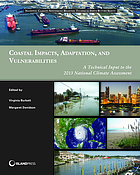 Coastal Impacts, Adaptation, and Vulnerabilities
by
Developed to inform the 2013 National Climate Assessment, and a landmark study in terms of its breadth and depth of coverage and conducted under the auspices of the U.S. Global Change Research Program, Coastal Impacts, Adaptation, and Vulnerabilities examines the known effects and relationships of climate change variables on the coasts of the U.S. This state of the art assessment comes from a broad range of experts in academia, private industry, state and local governments, NGOs, professional societies, and impacted communities. It includes case studies on topics such as adaptive capacity; climate change effects on. It highlights past climate trends, projected climate change and vulnerabilities, and impacts to specific sectors. Rich in science and case studies, it examines the latest climate change impacts, scenarios, vulnerabilities, and adaptive capacity for nine major coastal regions of the United States and provides essential guidance for decision-makers - as well as environmental academics, professionals, and advocates - who seek to better understand how climate variability and change impact the US coasts and its communities.
Coastal Impacts, Adaptation, and Vulnerabilities
by
Developed to inform the 2013 National Climate Assessment, and a landmark study in terms of its breadth and depth of coverage and conducted under the auspices of the U.S. Global Change Research Program, Coastal Impacts, Adaptation, and Vulnerabilities examines the known effects and relationships of climate change variables on the coasts of the U.S. This state of the art assessment comes from a broad range of experts in academia, private industry, state and local governments, NGOs, professional societies, and impacted communities. It includes case studies on topics such as adaptive capacity; climate change effects on. It highlights past climate trends, projected climate change and vulnerabilities, and impacts to specific sectors. Rich in science and case studies, it examines the latest climate change impacts, scenarios, vulnerabilities, and adaptive capacity for nine major coastal regions of the United States and provides essential guidance for decision-makers - as well as environmental academics, professionals, and advocates - who seek to better understand how climate variability and change impact the US coasts and its communities.
 Cities made of boundaries : mapping social life in urban form
by
Cities Made of Boundaries presents the theoretical foundation and concepts for a new social scientific urban morphological mapping method, Boundary Line Type (BLT) Mapping.
Cities made of boundaries : mapping social life in urban form
by
Cities Made of Boundaries presents the theoretical foundation and concepts for a new social scientific urban morphological mapping method, Boundary Line Type (BLT) Mapping.
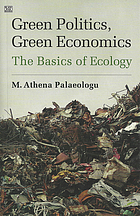 Green politics, green economics : the basics of ecology
by
Green politics, green economics : the basics of ecology
by
 Key Issues for Mountain Areas
by
The world's mountains are vital regions for all of humanity, providing a wide range of goods and services to their inhabitants, to those living nearby or downstream, and to the hundreds of millions who visit them or for whom they have spiritual significance. How to preserve fragile mountain ecosystems that provide critical goods and services while improving the lives of those who live in the mountains? This and other key issues of sustainable mountain development are examined in a series of papers prepared by globally-recognised experts. While mountain areas have long been on the periphery of national and global policy debates, their importance is underlined by the fact that they cover 24% of the Earth's land surface and 26% of the global population lives on them or very close by. They are sources of water, food, timber, minerals and other natural resources; they provide many opportunities for recreation and tourism; and they are centres of biological and cultural diversity and religious significance. At the same time, mountain people and mountain environments are particularly threatened by global environmental change and global economic and political forces. Unfortunately, a disproportionate number of conflicts occur in mountain regions, and their inhabitants include many of the poorest and most vulnerable in the world. This book explores many of these issues, with particular emphases on appropriate institutions and policies for sustainable mountain development. It is thus a key reference for scholars, policymakers and others interested in the future of the world's mountain areas.
Key Issues for Mountain Areas
by
The world's mountains are vital regions for all of humanity, providing a wide range of goods and services to their inhabitants, to those living nearby or downstream, and to the hundreds of millions who visit them or for whom they have spiritual significance. How to preserve fragile mountain ecosystems that provide critical goods and services while improving the lives of those who live in the mountains? This and other key issues of sustainable mountain development are examined in a series of papers prepared by globally-recognised experts. While mountain areas have long been on the periphery of national and global policy debates, their importance is underlined by the fact that they cover 24% of the Earth's land surface and 26% of the global population lives on them or very close by. They are sources of water, food, timber, minerals and other natural resources; they provide many opportunities for recreation and tourism; and they are centres of biological and cultural diversity and religious significance. At the same time, mountain people and mountain environments are particularly threatened by global environmental change and global economic and political forces. Unfortunately, a disproportionate number of conflicts occur in mountain regions, and their inhabitants include many of the poorest and most vulnerable in the world. This book explores many of these issues, with particular emphases on appropriate institutions and policies for sustainable mountain development. It is thus a key reference for scholars, policymakers and others interested in the future of the world's mountain areas.
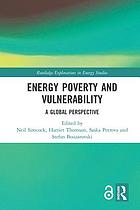 Energy Poverty and Vulnerability: a global perspective
by
Energy Poverty and Vulnerability provides novel and critical perspectives on the drivers and consequences of energy-related injustices in the home. Drawing together original research conducted by leading experts, the book offers fresh and innovative insights into the ways in which hitherto unexplored factors such as cultural norms, environmental conditions and household needs combine to shape vulnerability to energy poverty. Chapter 1 of this book is freely available as a downloadable Open Access PDF under a Creative Commons Attribution-Non Commercial-No Derivatives 3.0 license. https://s3-us-west-2.amazonaws.com/tandfbis/rt-files/docs/Open+Access+Chapters/9781315231518_oachapter1.pdf Chapter 15 of this book is freely available as a downloadable Open Access PDF under a Creative Commons Attribution-Non Commercial-No Derivatives 3.0 license. https://s3-us-west-2.amazonaws.com/tandfbis/rt-files/docs/Open+Access+Chapters/9781315231518_oachapter15.pdf Chapter 3 of this book is freely available as a downloadable Open Access PDF under a Creative Commons Attribution-Non Commercial-No Derivatives 3.0 license. https://s3-us-west-2.amazonaws.com/tandfbis/rt-files/docs/Open+Access+Chapters/9781138120617_oachapter3.pdf
Energy Poverty and Vulnerability: a global perspective
by
Energy Poverty and Vulnerability provides novel and critical perspectives on the drivers and consequences of energy-related injustices in the home. Drawing together original research conducted by leading experts, the book offers fresh and innovative insights into the ways in which hitherto unexplored factors such as cultural norms, environmental conditions and household needs combine to shape vulnerability to energy poverty. Chapter 1 of this book is freely available as a downloadable Open Access PDF under a Creative Commons Attribution-Non Commercial-No Derivatives 3.0 license. https://s3-us-west-2.amazonaws.com/tandfbis/rt-files/docs/Open+Access+Chapters/9781315231518_oachapter1.pdf Chapter 15 of this book is freely available as a downloadable Open Access PDF under a Creative Commons Attribution-Non Commercial-No Derivatives 3.0 license. https://s3-us-west-2.amazonaws.com/tandfbis/rt-files/docs/Open+Access+Chapters/9781315231518_oachapter15.pdf Chapter 3 of this book is freely available as a downloadable Open Access PDF under a Creative Commons Attribution-Non Commercial-No Derivatives 3.0 license. https://s3-us-west-2.amazonaws.com/tandfbis/rt-files/docs/Open+Access+Chapters/9781138120617_oachapter3.pdf
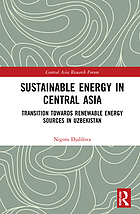 Sustainable Energy in Central Asia: transition towards renewable energy sources in Uzbekistan
by
This book argues that sustainable energy development represents a new frontier for many transitional economies, including those countries that are well endowed with traditional energy resources, as exemplified by the case of Uzbekistan in Central Asia. The book highlights the challenges and issues faced by the energy sector in countries which are undergoing a transition from government-led economic models to open market economies. Using Uzbekistan as a case study, the book demonstrates these challenges, as well as opportunities of being part of an increasingly interconnected global market, to show how governments can ensure inclusive economic growth and build pathways toward sustainable development by deploying renewable energy sources (RES). By applying the Quadruple Bottom Line strategy as a conceptual framework to evaluate social, economic, and environmental benefits and governance as a key dynamic component, the book includes recommendations for implementing a transition strategy to renewable energy consumption for developing countries and offers insights into ways of dealing with government policy in post-Soviet countries. Presenting a holistic approach to promoting RES deployment in Uzbekistan and elsewhere, this book will be of interest to researchers interested in energy transition in developing countries, development economics, Central Asian politics, and the management of natural resources and climate-change issues.
Sustainable Energy in Central Asia: transition towards renewable energy sources in Uzbekistan
by
This book argues that sustainable energy development represents a new frontier for many transitional economies, including those countries that are well endowed with traditional energy resources, as exemplified by the case of Uzbekistan in Central Asia. The book highlights the challenges and issues faced by the energy sector in countries which are undergoing a transition from government-led economic models to open market economies. Using Uzbekistan as a case study, the book demonstrates these challenges, as well as opportunities of being part of an increasingly interconnected global market, to show how governments can ensure inclusive economic growth and build pathways toward sustainable development by deploying renewable energy sources (RES). By applying the Quadruple Bottom Line strategy as a conceptual framework to evaluate social, economic, and environmental benefits and governance as a key dynamic component, the book includes recommendations for implementing a transition strategy to renewable energy consumption for developing countries and offers insights into ways of dealing with government policy in post-Soviet countries. Presenting a holistic approach to promoting RES deployment in Uzbekistan and elsewhere, this book will be of interest to researchers interested in energy transition in developing countries, development economics, Central Asian politics, and the management of natural resources and climate-change issues.
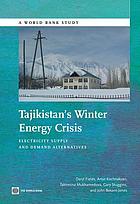 Tajikistan's Winter Energy Crisis: electricity supply and demand alternatives
by
The purpose of TajikistanOCOs Winter Energy Crisis is to assist the Government of Tajikistan (GoT) in exploring ways to overcome electricity shortages due to rising demand for electricity. It focuses on investments and policy reforms in order to strengthen the financial, technical, and institutional capacities in the power sector and to prepare the Government for undertaking a major expansion of power supply capacity until the year 2020. The Study explores a range of supply and demand alternatives (e.g., thermal, run-of-river hydro, other renewables, energy efficiency and demand management) excluding the option of large hydropower plants especially those requiring storage capacities, given the complexity and delays in their establishment. The option of a large hydropower project in Tajikistan, such as Rogun, is being explored by the various studies conducted by the Government and has involved a long process of information sharing on the findings of the studies for consensus building among stakeholders including Tajikistan, riparian Governments and their various Civil Society Organizations. Such a process requires the assurance of international quality standards, and incorporation of the concerns of all stakeholders.Without prompt actions, as recommended by the Study to address the causes of TajikistanOCOs electricity crisis in the next 4-5 years, the shortages could increase to about 4,500 GWh by 2016 - translating to over a third of winter electricity demand. Following the recommendations of the current Study, the GoT will be on the road to establishing a long term energy security in Tajikistan.
Tajikistan's Winter Energy Crisis: electricity supply and demand alternatives
by
The purpose of TajikistanOCOs Winter Energy Crisis is to assist the Government of Tajikistan (GoT) in exploring ways to overcome electricity shortages due to rising demand for electricity. It focuses on investments and policy reforms in order to strengthen the financial, technical, and institutional capacities in the power sector and to prepare the Government for undertaking a major expansion of power supply capacity until the year 2020. The Study explores a range of supply and demand alternatives (e.g., thermal, run-of-river hydro, other renewables, energy efficiency and demand management) excluding the option of large hydropower plants especially those requiring storage capacities, given the complexity and delays in their establishment. The option of a large hydropower project in Tajikistan, such as Rogun, is being explored by the various studies conducted by the Government and has involved a long process of information sharing on the findings of the studies for consensus building among stakeholders including Tajikistan, riparian Governments and their various Civil Society Organizations. Such a process requires the assurance of international quality standards, and incorporation of the concerns of all stakeholders.Without prompt actions, as recommended by the Study to address the causes of TajikistanOCOs electricity crisis in the next 4-5 years, the shortages could increase to about 4,500 GWh by 2016 - translating to over a third of winter electricity demand. Following the recommendations of the current Study, the GoT will be on the road to establishing a long term energy security in Tajikistan.
 Geographic Information Science for Land Resource Management
by
Geographic Information Science for Land Resource Management is a comprehensive book focusing on managing land resources using innovative techniques of spatial information sciences and satellite remote sensing. The enormous stress on the land resources over the years due to anthropogenic activities for commercialization and livelihood needs has increased manifold. The only solution to this problem lies in stakeholder awareness, which can only be attained through scientific means. The awareness is the basis of the sustainable development concept, which involves optimal management of natural resources, subject to the availability of reliable, accurate, and timely information from the global to local scales. GIScience consists of satellite remote sensing (RS), Geographical Information System (GIS), and Global Positioning System (GPS) technology that is nowadays a backbone of environmental protection, natural resource management, and sustainable development and planning. Being a powerful and proficient tool for mapping, monitoring, modeling, and managing natural resources can help understand the earth surface and its dynamics at different observational scales. Through the spatial understanding of land resources, policymakers can make prudent decisions to restore and conserve critically endangered resources, such as water bodies, lakes, rivers, air, forests, wildlife, biodiversity, etc. This innovative new volume contains chapters from eminent researchers and experts. The primary focus of this book is to replenish the gap in the available literature on the subject by bringing the concepts, theories, and experiences of the specialists and professionals in this field jointly. The editors have worked hard to get the best literature in this field in a book form to help the students, researchers, and policymakers develop a complete understanding of the land system vulnerabilities and solutions.
Geographic Information Science for Land Resource Management
by
Geographic Information Science for Land Resource Management is a comprehensive book focusing on managing land resources using innovative techniques of spatial information sciences and satellite remote sensing. The enormous stress on the land resources over the years due to anthropogenic activities for commercialization and livelihood needs has increased manifold. The only solution to this problem lies in stakeholder awareness, which can only be attained through scientific means. The awareness is the basis of the sustainable development concept, which involves optimal management of natural resources, subject to the availability of reliable, accurate, and timely information from the global to local scales. GIScience consists of satellite remote sensing (RS), Geographical Information System (GIS), and Global Positioning System (GPS) technology that is nowadays a backbone of environmental protection, natural resource management, and sustainable development and planning. Being a powerful and proficient tool for mapping, monitoring, modeling, and managing natural resources can help understand the earth surface and its dynamics at different observational scales. Through the spatial understanding of land resources, policymakers can make prudent decisions to restore and conserve critically endangered resources, such as water bodies, lakes, rivers, air, forests, wildlife, biodiversity, etc. This innovative new volume contains chapters from eminent researchers and experts. The primary focus of this book is to replenish the gap in the available literature on the subject by bringing the concepts, theories, and experiences of the specialists and professionals in this field jointly. The editors have worked hard to get the best literature in this field in a book form to help the students, researchers, and policymakers develop a complete understanding of the land system vulnerabilities and solutions.
 Gaither's dictionary of scientific quotations : a collection of approximately 27,000 quotations pertaining to archaeology, architecture, astronomy, biology, botany, chemistry, cosmology, darwinism, engineering, geology, mathematics, medicine, nature, nurs
by
This unprecedented collection of 27,000 quotations is the most comprehensive and carefully researched of its kind, covering all fields of science and mathematics. With this vast compendium you can readily conceptualize and embrace the written images of scientists, laymen, politicians, novelists, playwrights, and poets about humankind's scientific achievements. Approximately 9000 high-quality entries have been added to this new edition to provide a rich selection of quotations for the student, the educator, and the scientist who would like to introduce a presentation with a relevant quotation that provides perspective and historical background on his subject. Gaither's Dictionary of Scientific Quotations, Second Edition, provides the finest reference source of science quotations for all audiences. The new edition adds greater depth to the number of quotations in the various thematic arrangements and also provides new thematic categories. Expands and improves upon the ground-breaking first edition Features an unparalleled collection of 27,000 carefully selected quotations ranging over a vast array of topics from A(tomic Theory) to the Z(eta Function) Provides a one-stop reference for scientific quotations in all fields Includes comprehensive bibliographic information for each quotation Can be searched thematically and by author Praise for the First Edition: "This is an incredible feat of gathering and curating. It would unbalanced to call out a few gems--they're all here. Readers will find the expected heirlooms from Dobzhansky, Haldane, Einstein and Darwin, plus plenty of surprises from Shakespeare to Twain to Frank Lloyd Wright, as well as the inclusion of writers who haven't quite barged into the canon ... Here the dross is minimal, and the riches are high-grade ore."--American Scientist
Gaither's dictionary of scientific quotations : a collection of approximately 27,000 quotations pertaining to archaeology, architecture, astronomy, biology, botany, chemistry, cosmology, darwinism, engineering, geology, mathematics, medicine, nature, nurs
by
This unprecedented collection of 27,000 quotations is the most comprehensive and carefully researched of its kind, covering all fields of science and mathematics. With this vast compendium you can readily conceptualize and embrace the written images of scientists, laymen, politicians, novelists, playwrights, and poets about humankind's scientific achievements. Approximately 9000 high-quality entries have been added to this new edition to provide a rich selection of quotations for the student, the educator, and the scientist who would like to introduce a presentation with a relevant quotation that provides perspective and historical background on his subject. Gaither's Dictionary of Scientific Quotations, Second Edition, provides the finest reference source of science quotations for all audiences. The new edition adds greater depth to the number of quotations in the various thematic arrangements and also provides new thematic categories. Expands and improves upon the ground-breaking first edition Features an unparalleled collection of 27,000 carefully selected quotations ranging over a vast array of topics from A(tomic Theory) to the Z(eta Function) Provides a one-stop reference for scientific quotations in all fields Includes comprehensive bibliographic information for each quotation Can be searched thematically and by author Praise for the First Edition: "This is an incredible feat of gathering and curating. It would unbalanced to call out a few gems--they're all here. Readers will find the expected heirlooms from Dobzhansky, Haldane, Einstein and Darwin, plus plenty of surprises from Shakespeare to Twain to Frank Lloyd Wright, as well as the inclusion of writers who haven't quite barged into the canon ... Here the dross is minimal, and the riches are high-grade ore."--American Scientist
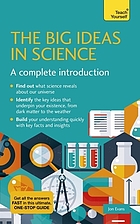 Big Ideas in Science: a complete introduction
by
The ability to understand science as a totality - matter, space, energy, life, weather, information and the future - will enhance your understanding of all the challenges facing humanity, as well as allow you to go deeper into specific technologies. This book, complete with worked examples and key facts, forms a course which will take you from novice level to a competent understanding of the hottest topics in science. It includes step-by-step explanations of subjects as complex as the birth of life and plate tectonics, with suggestions for further reading and summaries to help you understand the key points. Chapters cover: the Big Bang, the solar system, the birth of life, evolution, DNA, the genome, genetics and cloning, the structure of Earth, earthquakes and volcanoes, weather, energy, the microprocessor, artificial intelligence, space exploration, scientific fraud, scientific controversies, climate change, and the future of science. The Complete Introduction series from Teach Yourself is the ultimate one-stop guide for anyone wanting a comprehensive and accessible entry point into subjects as diverse as philosophy, mathematics, psychology, Shakespeare and economics. Loved by students and perfect for general readers who simply want to learn more about the world around them, these books are your first choice for discovering something new.
Big Ideas in Science: a complete introduction
by
The ability to understand science as a totality - matter, space, energy, life, weather, information and the future - will enhance your understanding of all the challenges facing humanity, as well as allow you to go deeper into specific technologies. This book, complete with worked examples and key facts, forms a course which will take you from novice level to a competent understanding of the hottest topics in science. It includes step-by-step explanations of subjects as complex as the birth of life and plate tectonics, with suggestions for further reading and summaries to help you understand the key points. Chapters cover: the Big Bang, the solar system, the birth of life, evolution, DNA, the genome, genetics and cloning, the structure of Earth, earthquakes and volcanoes, weather, energy, the microprocessor, artificial intelligence, space exploration, scientific fraud, scientific controversies, climate change, and the future of science. The Complete Introduction series from Teach Yourself is the ultimate one-stop guide for anyone wanting a comprehensive and accessible entry point into subjects as diverse as philosophy, mathematics, psychology, Shakespeare and economics. Loved by students and perfect for general readers who simply want to learn more about the world around them, these books are your first choice for discovering something new.
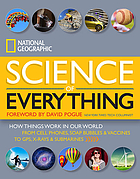 National Geographic science of everything : how things work in our world from cell phones, soap bubbles & vaccines to GPS, x-rays & submarines
by
"This clearly written and profusely illustrated book explains the science behind all the machines, gadgets, systems, and processes we take for granted. The perfect book for techies--young or old, male or female--who read Popular Science and Wired or watch "How It Works" and "How It's Made." National Geographic answers all the questions about how things work--the science, technology, biology, chemistry, physics, and mechanics--in an indispensible book that reveals the science behind virtually everything. How does the voice of a distant radio announcer make it through your alarm clock in the morning? How does your gas stove work? How does the remote control open your garage door? What happens when you turn the key in the ignition? What do antibiotics really do? Divided into four big realms--Mechanics, Natural Forces, Materials & Chemistry, Biology & Medicine--The Science of Everything takes readers on a fascinating tour, using plain talk, colorful photography, instructive diagrams, and everyday examples to explain the science behind all the things we take for granted in our modern world"-- Provided by publisher.
National Geographic science of everything : how things work in our world from cell phones, soap bubbles & vaccines to GPS, x-rays & submarines
by
"This clearly written and profusely illustrated book explains the science behind all the machines, gadgets, systems, and processes we take for granted. The perfect book for techies--young or old, male or female--who read Popular Science and Wired or watch "How It Works" and "How It's Made." National Geographic answers all the questions about how things work--the science, technology, biology, chemistry, physics, and mechanics--in an indispensible book that reveals the science behind virtually everything. How does the voice of a distant radio announcer make it through your alarm clock in the morning? How does your gas stove work? How does the remote control open your garage door? What happens when you turn the key in the ignition? What do antibiotics really do? Divided into four big realms--Mechanics, Natural Forces, Materials & Chemistry, Biology & Medicine--The Science of Everything takes readers on a fascinating tour, using plain talk, colorful photography, instructive diagrams, and everyday examples to explain the science behind all the things we take for granted in our modern world"-- Provided by publisher.
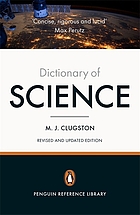 The Penguin dictionary of science
by
A fourth, meticulously updated and revised edition of the comprehensive and renowned Penguin Dictionary of Science. The Penguin Dictionary of Science covers all the important topics in this key subject area including chemistry, physics, molecular biology, genetics, biochemistry, human anatomy, mathematics, astronomy and computing. Superbly comprehensive and accessible, this newly updated dictionary is the ideal reference tool for anyone who needs to understand scientific terms, whether student, researcher or enthusiastic layperson.
The Penguin dictionary of science
by
A fourth, meticulously updated and revised edition of the comprehensive and renowned Penguin Dictionary of Science. The Penguin Dictionary of Science covers all the important topics in this key subject area including chemistry, physics, molecular biology, genetics, biochemistry, human anatomy, mathematics, astronomy and computing. Superbly comprehensive and accessible, this newly updated dictionary is the ideal reference tool for anyone who needs to understand scientific terms, whether student, researcher or enthusiastic layperson.
 Modern Concepts of Natural Science
by
This book explores both general and specific ideas of the formation and development of modern natural sciences. Some basic problems characteristic of natural science development are discussed. Integrative–general scientific trends are considered where natural-scientific knowledge is of highest value, in particular, solving global universal problems and the world community's transition to sustainable development. The book contents includes the universal laws of preservation in nature, the concept of continuous–discrete properties of matter, the foundations of the special and general theory of relativity, the laws of thermodynamics, the problem of relation of the reactivity of substances with their structure and properties, the concepts of molecular and genetic biology, the idea of the origin, structure and evolution of the Universe and Earth, the concepts of general and applied ecology, and features of self-organization processes in both inanimate and animate nature.
Modern Concepts of Natural Science
by
This book explores both general and specific ideas of the formation and development of modern natural sciences. Some basic problems characteristic of natural science development are discussed. Integrative–general scientific trends are considered where natural-scientific knowledge is of highest value, in particular, solving global universal problems and the world community's transition to sustainable development. The book contents includes the universal laws of preservation in nature, the concept of continuous–discrete properties of matter, the foundations of the special and general theory of relativity, the laws of thermodynamics, the problem of relation of the reactivity of substances with their structure and properties, the concepts of molecular and genetic biology, the idea of the origin, structure and evolution of the Universe and Earth, the concepts of general and applied ecology, and features of self-organization processes in both inanimate and animate nature.
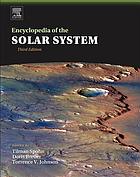 Encyclopedia of the solar system
by
"This book is filled with the knowledge about our solar system that resulted from all this exploration, whether by spacecraft or by telescopes both in space and earth-bound. All of this new knowledge is based on discoveries made in the interim by scientist-explorers who have followed their inborn human imperative to explore and to understand. Many old mysteries, misunderstandings, and fears that existed 50 years ago about what lay beyond the Earth have been eliminated. We now know the major features of the landscape in our cosmic backyard and can look forward to the adventure, excitement, and new knowledge that will result from more in-depth exploration by today's spacecraft, such as those actually exploring the surface of these faraway places, including the Huygens Titan lander and the Mars Exploration rovers, doing things that were unimaginable before the Space Age began. The Encyclopedia of the Solar System is filled with images, illustrations, and charts to aid in understanding. Every object in the solar system is covered by at least one chapter. Other chapters are devoted to the relationships among the objects in the solar system and with the galaxy beyond. The processes that operate on solar system objects, in their atmospheres, on their surfaces, in their interiors, and interactions with space itself are all described in detail. There are chapters on how we explore and learn about the solar system and about the investigations used to make new discoveries. And there are chapters on the history of solar system exploration and the missions that have carried out this enterprise. All written by an international set of world-class scientists using rigorous yet easy-to-understand prose"--Provided by publisher
Encyclopedia of the solar system
by
"This book is filled with the knowledge about our solar system that resulted from all this exploration, whether by spacecraft or by telescopes both in space and earth-bound. All of this new knowledge is based on discoveries made in the interim by scientist-explorers who have followed their inborn human imperative to explore and to understand. Many old mysteries, misunderstandings, and fears that existed 50 years ago about what lay beyond the Earth have been eliminated. We now know the major features of the landscape in our cosmic backyard and can look forward to the adventure, excitement, and new knowledge that will result from more in-depth exploration by today's spacecraft, such as those actually exploring the surface of these faraway places, including the Huygens Titan lander and the Mars Exploration rovers, doing things that were unimaginable before the Space Age began. The Encyclopedia of the Solar System is filled with images, illustrations, and charts to aid in understanding. Every object in the solar system is covered by at least one chapter. Other chapters are devoted to the relationships among the objects in the solar system and with the galaxy beyond. The processes that operate on solar system objects, in their atmospheres, on their surfaces, in their interiors, and interactions with space itself are all described in detail. There are chapters on how we explore and learn about the solar system and about the investigations used to make new discoveries. And there are chapters on the history of solar system exploration and the missions that have carried out this enterprise. All written by an international set of world-class scientists using rigorous yet easy-to-understand prose"--Provided by publisher
 The earth machine: the science of a dynamic planet
by
From the scorching center of Earth's core to the outer limits of its atmosphere, from the gradual process of erosion that carved the Grand Canyon to the earth-shaking fury of volcanoes and earthquakes, this fascinating book-inspired by the award-winning Hall of Planet Earth at New York City's American Museum of Natural History-tells the story of the evolution of our planet and of the science that makes it work. With the same exuberance and expertise they brought to the creation of the Hall of Planet Earth, co-curators Edmond A. Mathez and James D. Webster offer a guided tour of Earth's dynamic, 4.6-billion-year history. Including numerous full-color photographs of the innovative exhibit and helpful, easy-to-understand illustrations, the authors explore the major factors in our planet's evolution: how Earth emerged from the swirling dusts of a nascent solar system; how an oxygen-rich, life-sustaining atmosphere developed; how continents, mountain ranges, and oceans formed; and how earthquakes and volcanic eruptions alter Earth's surface. Traversing geologic time and delving into the depths of the planet--beginning with meteorites containing minuscule particles that are the solar system's oldest known objects, and concluding with the unusual microbial life that lives on the chemical and thermal energy produced by sulfide vents in the ocean floor-The Earth Machine provides an up-to-date overview of the central theories and discoveries in earth science today. By incorporating stories of real-life fieldwork, Mathez and Webster explain how Earth is capable of supporting life, how even the smallest rocks can hold the key to explaining the formation of mountains, and how scientists have learned to read nature's subtle clues and interpret Earth's ever-evolving narrative.
The earth machine: the science of a dynamic planet
by
From the scorching center of Earth's core to the outer limits of its atmosphere, from the gradual process of erosion that carved the Grand Canyon to the earth-shaking fury of volcanoes and earthquakes, this fascinating book-inspired by the award-winning Hall of Planet Earth at New York City's American Museum of Natural History-tells the story of the evolution of our planet and of the science that makes it work. With the same exuberance and expertise they brought to the creation of the Hall of Planet Earth, co-curators Edmond A. Mathez and James D. Webster offer a guided tour of Earth's dynamic, 4.6-billion-year history. Including numerous full-color photographs of the innovative exhibit and helpful, easy-to-understand illustrations, the authors explore the major factors in our planet's evolution: how Earth emerged from the swirling dusts of a nascent solar system; how an oxygen-rich, life-sustaining atmosphere developed; how continents, mountain ranges, and oceans formed; and how earthquakes and volcanic eruptions alter Earth's surface. Traversing geologic time and delving into the depths of the planet--beginning with meteorites containing minuscule particles that are the solar system's oldest known objects, and concluding with the unusual microbial life that lives on the chemical and thermal energy produced by sulfide vents in the ocean floor-The Earth Machine provides an up-to-date overview of the central theories and discoveries in earth science today. By incorporating stories of real-life fieldwork, Mathez and Webster explain how Earth is capable of supporting life, how even the smallest rocks can hold the key to explaining the formation of mountains, and how scientists have learned to read nature's subtle clues and interpret Earth's ever-evolving narrative.
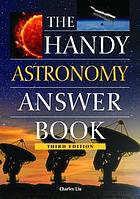 The Handy Astronomy Answer Book
by
From planetary movements and the exploration of our solar system to black holes and dark matter, this comprehensive reference simplifies all aspects of astronomy with an approachable question-and-answer format. With chapters broken into various astronomical studies--including the universe, galaxies, planets, and space exploration--this fully updated resource is an ideal companion for students, teachers, and amateur astronomers, answering more than 1,00 questions, such as Is the universe infinite? What would happen to you if you fell onto a black hole? What are the basic concepts of Einstein's special theory of relativity? and Who was the first person in space?
The Handy Astronomy Answer Book
by
From planetary movements and the exploration of our solar system to black holes and dark matter, this comprehensive reference simplifies all aspects of astronomy with an approachable question-and-answer format. With chapters broken into various astronomical studies--including the universe, galaxies, planets, and space exploration--this fully updated resource is an ideal companion for students, teachers, and amateur astronomers, answering more than 1,00 questions, such as Is the universe infinite? What would happen to you if you fell onto a black hole? What are the basic concepts of Einstein's special theory of relativity? and Who was the first person in space?
 Encyclopedia of Space and Astronomy
by
Praise for the previous edition:...splendidly informative...provides a treasure store of information dealing with astronomy and space technology, not to mention some geology and mathematics...endlessly fascinating...a valuable resource for high school astronomy and physics classes and in college science libraries.--VOYA...provides current, authoritative information...recommended for libraries in need of a general encyclopedia on space and astronomy.--Booklist...[a] highly informative, well-organized introduction...--American Reference Books Annual...recommended for high school, academic, and larger public libraries and astronomy collections.--Library Journal...chock-full of useful and unusual information...a valuable addition to any smaller collection serving serious students...--School Library JournalBoth academic and public libraries will find this a useful reference...Recommended.--Choice...a fine addition to both public and academic libraries...--Reference ReviewsHonor Book Science 7-12 category--Society of School Librarians InternationalWe've come a long way from the days when we traced astrological shapes in the stars and thought comets spelled disaster. Our knowledge of space and the universe around us has increased dramatically over the centuries, and, with every new venture--from the Mars rover Curiosity's explorations of the red planet to New Horizons's up-close look at Pluto--it just keeps growing broader. Keep track of that expanding knowledge with the Encyclopedia of Space and Astronomy, Revised Edition. Offering a complete, up-to-date presentation of the main concepts, terms, facilities, and people in astronomy, the encyclopedia pays special attention to space-based astronomy and space exploration. Broad coverage includes terms such as astrophysics, planetary science, and cosmology, as well as both American and international astronomy and space technology. Encyclopedia of Space and Astronomy, Revised Edition focuses mainly on modern astronomy and space achievements but also includes the most important accomplishments of classical astronomy. The impact of astronomy, astrophysics, and cosmology is presented in terms of the development of the scientific method and also with respect to philosophy. History-related entries trace the evolution of astronomy and space technology from ancient times, and selected entries discuss important observatories and organizations such as NASA, as well as contemporary events.This volume also includes five helpful appendixes: a bibliography of print resources, an extensive list of websites, a chronology of significant events in space and astronomy, a table of basic planetary data, and an interesting breakdown on how planets and other celestial bodies were named. Entries include:Apollo ProjectBlack holeCenter of gravityDark matterGeneral relativityInternational Space StationKepler's lawsLunar bases and settlementsNuclear reactorPioneer 10, 11 spacecraftRobotics in spaceRocketSatelliteUnidentified flying object (UFO)X-ray astronomyZodiac.
Encyclopedia of Space and Astronomy
by
Praise for the previous edition:...splendidly informative...provides a treasure store of information dealing with astronomy and space technology, not to mention some geology and mathematics...endlessly fascinating...a valuable resource for high school astronomy and physics classes and in college science libraries.--VOYA...provides current, authoritative information...recommended for libraries in need of a general encyclopedia on space and astronomy.--Booklist...[a] highly informative, well-organized introduction...--American Reference Books Annual...recommended for high school, academic, and larger public libraries and astronomy collections.--Library Journal...chock-full of useful and unusual information...a valuable addition to any smaller collection serving serious students...--School Library JournalBoth academic and public libraries will find this a useful reference...Recommended.--Choice...a fine addition to both public and academic libraries...--Reference ReviewsHonor Book Science 7-12 category--Society of School Librarians InternationalWe've come a long way from the days when we traced astrological shapes in the stars and thought comets spelled disaster. Our knowledge of space and the universe around us has increased dramatically over the centuries, and, with every new venture--from the Mars rover Curiosity's explorations of the red planet to New Horizons's up-close look at Pluto--it just keeps growing broader. Keep track of that expanding knowledge with the Encyclopedia of Space and Astronomy, Revised Edition. Offering a complete, up-to-date presentation of the main concepts, terms, facilities, and people in astronomy, the encyclopedia pays special attention to space-based astronomy and space exploration. Broad coverage includes terms such as astrophysics, planetary science, and cosmology, as well as both American and international astronomy and space technology. Encyclopedia of Space and Astronomy, Revised Edition focuses mainly on modern astronomy and space achievements but also includes the most important accomplishments of classical astronomy. The impact of astronomy, astrophysics, and cosmology is presented in terms of the development of the scientific method and also with respect to philosophy. History-related entries trace the evolution of astronomy and space technology from ancient times, and selected entries discuss important observatories and organizations such as NASA, as well as contemporary events.This volume also includes five helpful appendixes: a bibliography of print resources, an extensive list of websites, a chronology of significant events in space and astronomy, a table of basic planetary data, and an interesting breakdown on how planets and other celestial bodies were named. Entries include:Apollo ProjectBlack holeCenter of gravityDark matterGeneral relativityInternational Space StationKepler's lawsLunar bases and settlementsNuclear reactorPioneer 10, 11 spacecraftRobotics in spaceRocketSatelliteUnidentified flying object (UFO)X-ray astronomyZodiac.
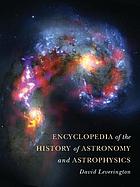 Encyclopedia of the History of Astronomy and Astrophysics
by
This comprehensive Encyclopedia covers the full history of astronomy from its ancient origins in Africa, South America, the Middle East and China to the latest developments in astrophysics and space-based research. The initial articles, which are largely organised chronologically, are followed by numerous thematic historical articles on the constituents of the Solar System, types of stars, stellar evolution, active galaxies, cosmology and much more. These are followed by articles on tools and techniques, from the history of spectroscopy to adaptive optics. The last part of the Encyclopedia is devoted to the history of ground- and space-based telescopes and observatories, covering the full spectral range from gamma-rays through the optical waveband to radio waves. Informative and accessibly written, each article is followed by an extensive bibliography to facilitate further research, whilst consistent coverage from ancient times to the present makes this an ideal resource for scholars, students and amateur astronomers alike.
Encyclopedia of the History of Astronomy and Astrophysics
by
This comprehensive Encyclopedia covers the full history of astronomy from its ancient origins in Africa, South America, the Middle East and China to the latest developments in astrophysics and space-based research. The initial articles, which are largely organised chronologically, are followed by numerous thematic historical articles on the constituents of the Solar System, types of stars, stellar evolution, active galaxies, cosmology and much more. These are followed by articles on tools and techniques, from the history of spectroscopy to adaptive optics. The last part of the Encyclopedia is devoted to the history of ground- and space-based telescopes and observatories, covering the full spectral range from gamma-rays through the optical waveband to radio waves. Informative and accessibly written, each article is followed by an extensive bibliography to facilitate further research, whilst consistent coverage from ancient times to the present makes this an ideal resource for scholars, students and amateur astronomers alike.
 The Astronomy Encyclopedia
by
Many encyclopedia entries (from aberration to ZZ Ceti star) authenticated by a team of respected academics. Colour illustrations, photographs, artworks, and tables. Star Maps created by Wil Tirion.
The Astronomy Encyclopedia
by
Many encyclopedia entries (from aberration to ZZ Ceti star) authenticated by a team of respected academics. Colour illustrations, photographs, artworks, and tables. Star Maps created by Wil Tirion.
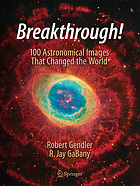 Breakthrough!: 100 astronomical images that changed the world
by
This unique volume by two renowned astrophotographers unveils the science and history behind 100 of the most significant astronomical images of all time. The authors have carefully selected their list of images from across time and technology to bring to the reader the most relevant photographic images spanning all eras of modern astronomical history. Based on scientific evidence today we have a basic notion of how Earth and the universe came to be. The road to this knowledge was paved with 175 years of astronomical images acquired by the coupling of two revolutionary technologies - the camera and telescope. With ingenuity and determination humankind would quickly embrace these technologies to tell the story of the cosmos and unravel its mysteries. This book presents in pictures and words a photographic chronology of our aspiration to understand the universe. From the first fledgling attempts to photograph the Moon, planets, and stars to the marvels of orbiting observatories that record the cosmos at energies beyond the range of human vision, astronomers have always relied on images to "break through" to the next level of understanding. A subset of these breakthrough images has profound significance in documenting some of the greatest milestones in modern astronomy.
Breakthrough!: 100 astronomical images that changed the world
by
This unique volume by two renowned astrophotographers unveils the science and history behind 100 of the most significant astronomical images of all time. The authors have carefully selected their list of images from across time and technology to bring to the reader the most relevant photographic images spanning all eras of modern astronomical history. Based on scientific evidence today we have a basic notion of how Earth and the universe came to be. The road to this knowledge was paved with 175 years of astronomical images acquired by the coupling of two revolutionary technologies - the camera and telescope. With ingenuity and determination humankind would quickly embrace these technologies to tell the story of the cosmos and unravel its mysteries. This book presents in pictures and words a photographic chronology of our aspiration to understand the universe. From the first fledgling attempts to photograph the Moon, planets, and stars to the marvels of orbiting observatories that record the cosmos at energies beyond the range of human vision, astronomers have always relied on images to "break through" to the next level of understanding. A subset of these breakthrough images has profound significance in documenting some of the greatest milestones in modern astronomy.
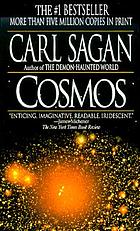 Cosmos
by
The best-selling science book ever published in the English language, COSMOS is a magnificent overview of the past, present, and future of science. Brilliant and provocative, it traces today's knowledge and scientific methods to their historical roots, blending science and philosophy in a wholly energetic and irresistible way.
Cosmos
by
The best-selling science book ever published in the English language, COSMOS is a magnificent overview of the past, present, and future of science. Brilliant and provocative, it traces today's knowledge and scientific methods to their historical roots, blending science and philosophy in a wholly energetic and irresistible way.
 A History of the Solar System
by
This well illustrated book presents a compact history of the Solar System from its dusty origins 4,600,000 years ago to the present day. Its primary aim is to show how the planets and their satellites, comets, meteors, interplanetary dust, solar radiation and cosmic rays continually interact, sometimes violently, and it reflects humanity's progress in exploring and interpreting this history. The book is intended for a general readership at a time when human and robotic exploration of space is often in the news and should also appeal to students at all levels. It covers the essentials but refers to a large literature which can be accessed via the internet.
A History of the Solar System
by
This well illustrated book presents a compact history of the Solar System from its dusty origins 4,600,000 years ago to the present day. Its primary aim is to show how the planets and their satellites, comets, meteors, interplanetary dust, solar radiation and cosmic rays continually interact, sometimes violently, and it reflects humanity's progress in exploring and interpreting this history. The book is intended for a general readership at a time when human and robotic exploration of space is often in the news and should also appeal to students at all levels. It covers the essentials but refers to a large literature which can be accessed via the internet.
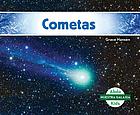 Cometas
by
This title will cover how comets came to be, what they are made of, where most of them are found, and why we can sometimes see them as beautiful bright streaks in the sky! Aligned to Common Core Standards and correlated to state standards. Translated by native Spanish speakers--and immersion school educators. Abdo Kids Jumbo is an imprint of Abdo Kids, a division of ABDO.
Cometas
by
This title will cover how comets came to be, what they are made of, where most of them are found, and why we can sometimes see them as beautiful bright streaks in the sky! Aligned to Common Core Standards and correlated to state standards. Translated by native Spanish speakers--and immersion school educators. Abdo Kids Jumbo is an imprint of Abdo Kids, a division of ABDO.
 The atlas of climate change : mapping the world's greatest challenge
by
This highly acclaimed atlas distills the vast science of climate change, providing a reliable and insightful guide to this rapidly growing field. Since the 2006 publication of the first edition, climate change has climbed even higher up the global agenda. This new edition reflects the latest developments in research and the impact of climate change, and in current efforts to mitigate and adapt to changes in the worlds weather.
The atlas of climate change : mapping the world's greatest challenge
by
This highly acclaimed atlas distills the vast science of climate change, providing a reliable and insightful guide to this rapidly growing field. Since the 2006 publication of the first edition, climate change has climbed even higher up the global agenda. This new edition reflects the latest developments in research and the impact of climate change, and in current efforts to mitigate and adapt to changes in the worlds weather.
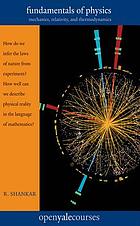 Fundamentals of Physics. Mechanics, relativity, and thermodynamics
by
Professor R. Shankar, a well-known physicist and contagiously enthusiastic educator, was among the first to offer a course through the innovative Open Yale Course program. His popular online video lectures on introductory physics have been viewed over a million times. In this concise and self-contained book based on his online Yale course, Shankar explains the fundamental concepts of physics from Galileo's and Newton's discoveries to the twentieth-century's revolutionary ideas on relativity and quantum mechanics. The book begins at the simplest level, develops the basics, and reinforces fundamentals, ensuring a solid foundation in the principles and methods of physics. It provides an ideal introduction for college-level students of physics, chemistry, and engineering, for motivated AP Physics students, and for general readers interested in advances in the sciences. Instructor resources--including problem sets and sample examinations--and more information about Professor Shankar's course are available at http://oyc.yale.edu/physics/phys-200.
Fundamentals of Physics. Mechanics, relativity, and thermodynamics
by
Professor R. Shankar, a well-known physicist and contagiously enthusiastic educator, was among the first to offer a course through the innovative Open Yale Course program. His popular online video lectures on introductory physics have been viewed over a million times. In this concise and self-contained book based on his online Yale course, Shankar explains the fundamental concepts of physics from Galileo's and Newton's discoveries to the twentieth-century's revolutionary ideas on relativity and quantum mechanics. The book begins at the simplest level, develops the basics, and reinforces fundamentals, ensuring a solid foundation in the principles and methods of physics. It provides an ideal introduction for college-level students of physics, chemistry, and engineering, for motivated AP Physics students, and for general readers interested in advances in the sciences. Instructor resources--including problem sets and sample examinations--and more information about Professor Shankar's course are available at http://oyc.yale.edu/physics/phys-200.
 The Penguin Dictionary of Physics
by
Provides clear and concise definitions for every area of physics--from optics and acoustics to mechanics and electronics, via quantum theory and relativity.
The Penguin Dictionary of Physics
by
Provides clear and concise definitions for every area of physics--from optics and acoustics to mechanics and electronics, via quantum theory and relativity.
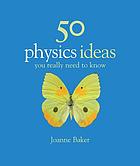 50 Physics Ideas You Really Need to Know
by
In this, the second volume in an important new series presenting core concepts across a range of critical areas of human knowledge, author Joanne Baker unravels the complexities of 20th-century scientific theory for a general readership. From Hubble's law to the Pauli exclusion principle, and from Schrodinger's cat to Heisenberg's uncertainty principle, she explains ideas at the cutting-edge of scientific enquiry, making them comprehensible and accessible to the layperson.
50 Physics Ideas You Really Need to Know
by
In this, the second volume in an important new series presenting core concepts across a range of critical areas of human knowledge, author Joanne Baker unravels the complexities of 20th-century scientific theory for a general readership. From Hubble's law to the Pauli exclusion principle, and from Schrodinger's cat to Heisenberg's uncertainty principle, she explains ideas at the cutting-edge of scientific enquiry, making them comprehensible and accessible to the layperson.
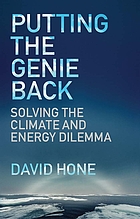 Putting the Genie Back: solving the climate and energy dilemma
by
On November 4th 2016 the Paris Agreement entered into force. The warming of the climate system, first recognized over a century ago, has become one of the key political and social issues of our time. Some still deny it is happening, others are incensed by the slow pace of change, while most are left confused and uncertain not just by the science, but by the panoply of solutions put forward by politicians, business people, academics and activists. At its most ambitious, the Paris Agreement implies a transition within the global energy system such that carbon dioxide emissions fall rapidly from 40 billion tonnes per annum in 2016, to net-zero by the middle of the century. Yet our fossil fuel based energy system which ushered in the Industrial Revolution nearly 200 years ago continues to grow and evolve even as new sources of energy come into the market and compete. The principal economic instrument for change is clear and has been for over two decades, but in 2017 only a fraction of the global economy actively employs government led carbon pricing policies and within that only a handful of systems operate at a level commensurate with the pace and scale of change that is necessary. As deployment of new energy technologies accelerates, can solutions be found to cover the full range of services delivered by fossil fuels and can warming be limited to the agreed global goals? Putting the Genie Back explores the climate issue from its very beginnings through to the end of end of the 21st Century and looks in depth at the transition challenge we collectively face.
Putting the Genie Back: solving the climate and energy dilemma
by
On November 4th 2016 the Paris Agreement entered into force. The warming of the climate system, first recognized over a century ago, has become one of the key political and social issues of our time. Some still deny it is happening, others are incensed by the slow pace of change, while most are left confused and uncertain not just by the science, but by the panoply of solutions put forward by politicians, business people, academics and activists. At its most ambitious, the Paris Agreement implies a transition within the global energy system such that carbon dioxide emissions fall rapidly from 40 billion tonnes per annum in 2016, to net-zero by the middle of the century. Yet our fossil fuel based energy system which ushered in the Industrial Revolution nearly 200 years ago continues to grow and evolve even as new sources of energy come into the market and compete. The principal economic instrument for change is clear and has been for over two decades, but in 2017 only a fraction of the global economy actively employs government led carbon pricing policies and within that only a handful of systems operate at a level commensurate with the pace and scale of change that is necessary. As deployment of new energy technologies accelerates, can solutions be found to cover the full range of services delivered by fossil fuels and can warming be limited to the agreed global goals? Putting the Genie Back explores the climate issue from its very beginnings through to the end of end of the 21st Century and looks in depth at the transition challenge we collectively face.
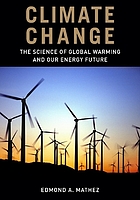 Climate Change : the science of global warming and our energy future
by
Climate Change is geared toward a variety of students and general readers who seek the real science behind global warming. Exquisitely illustrated, the text introduces the basic science underlying both the natural progress of climate change and the effect of human activity on the deteriorating health of our planet. Noted expert and author Edmond A. Mathez synthesizes the work of leading scholars in climatology and related fields, and he concludes with an extensive chapter on energy production, anchoring this volume in economic and technological realities and suggesting ways to reduce greenhouse-gas emissions. Climate Change opens with the climate system fundamentals: the workings of the atmosphere and ocean, their chemical interactions via the carbon cycle, and the scientific framework for understanding climate change. Mathez then brings the climate of the past to bear on our present predicament, highlighting the importance of paleoclimatology in understanding the current climate system. Subsequent chapters explore the changes already occurring around us and their implications for the future. In a special feature, Jason E. Smerdon, associate research scientist at Lamont-Doherty Earth Observatory of Columbia University, provides an innovative appendix for students.
Climate Change : the science of global warming and our energy future
by
Climate Change is geared toward a variety of students and general readers who seek the real science behind global warming. Exquisitely illustrated, the text introduces the basic science underlying both the natural progress of climate change and the effect of human activity on the deteriorating health of our planet. Noted expert and author Edmond A. Mathez synthesizes the work of leading scholars in climatology and related fields, and he concludes with an extensive chapter on energy production, anchoring this volume in economic and technological realities and suggesting ways to reduce greenhouse-gas emissions. Climate Change opens with the climate system fundamentals: the workings of the atmosphere and ocean, their chemical interactions via the carbon cycle, and the scientific framework for understanding climate change. Mathez then brings the climate of the past to bear on our present predicament, highlighting the importance of paleoclimatology in understanding the current climate system. Subsequent chapters explore the changes already occurring around us and their implications for the future. In a special feature, Jason E. Smerdon, associate research scientist at Lamont-Doherty Earth Observatory of Columbia University, provides an innovative appendix for students.
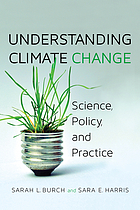 Understanding Climate Change : science, policy, and practice
by
Conversations about climate change are filled with challenges involving complex data, deeply held values, and political issues. Understanding Climate Change provides readers with a concise, accessible, and holistic picture of the climate change problem, including both the scientific and human dimensions. Understanding Climate Change examines climate change as both a scientific and a public policy issue. Sarah L. Burch and Sara E. Harris explain the basics of the climate system, climate models and prediction, and human and biophysical impacts, as well as strategies for reducing greenhouse gas emissions, enhancing adaptability, and enabling climate change governance. The authors examine the connections between climate change and other pressing issues, such as human health, poverty, and other environmental problems, and they explore the ways that sustainable responses to climate change can simultaneously address those issues. An effective and integrated introduction to an urgent and controversial issue, Understanding Climate Change contains the tools needed for students, instructors, and decision-makers to become constructive participants in the human response to climate change.
Understanding Climate Change : science, policy, and practice
by
Conversations about climate change are filled with challenges involving complex data, deeply held values, and political issues. Understanding Climate Change provides readers with a concise, accessible, and holistic picture of the climate change problem, including both the scientific and human dimensions. Understanding Climate Change examines climate change as both a scientific and a public policy issue. Sarah L. Burch and Sara E. Harris explain the basics of the climate system, climate models and prediction, and human and biophysical impacts, as well as strategies for reducing greenhouse gas emissions, enhancing adaptability, and enabling climate change governance. The authors examine the connections between climate change and other pressing issues, such as human health, poverty, and other environmental problems, and they explore the ways that sustainable responses to climate change can simultaneously address those issues. An effective and integrated introduction to an urgent and controversial issue, Understanding Climate Change contains the tools needed for students, instructors, and decision-makers to become constructive participants in the human response to climate change.
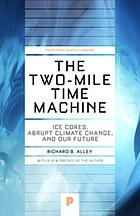 The Two-Mile Time Machine: Ice Cores, Abrupt Climate Change, and Our Future.
by
In the 1990s Richard B. Alley and his colleagues made headlines with the discovery that the last ice age came to an abrupt end over a period of only three years. In The Two-Mile Time Machine, Alley tells the fascinating history of global climate changes as revealed by reading the annual rings of ice from cores drilled in Greenland. He explains that humans have experienced an unusually temperate climate compared to the wild fluctuations that characterized most of prehistory. He warns that our comfortable environment could come to an end in a matter of years and tells us what we need to know in order to understand and perhaps overcome climate changes in the future. In a new preface, the author weighs in on whether our understanding of global climate change has altered in the years since the book was first published, what the latest research tells us, and what he is working on next.
The Two-Mile Time Machine: Ice Cores, Abrupt Climate Change, and Our Future.
by
In the 1990s Richard B. Alley and his colleagues made headlines with the discovery that the last ice age came to an abrupt end over a period of only three years. In The Two-Mile Time Machine, Alley tells the fascinating history of global climate changes as revealed by reading the annual rings of ice from cores drilled in Greenland. He explains that humans have experienced an unusually temperate climate compared to the wild fluctuations that characterized most of prehistory. He warns that our comfortable environment could come to an end in a matter of years and tells us what we need to know in order to understand and perhaps overcome climate changes in the future. In a new preface, the author weighs in on whether our understanding of global climate change has altered in the years since the book was first published, what the latest research tells us, and what he is working on next.
 Assessment of Climate Change in the Southwest United States: a report prepared for the National Climate Assessment
by
Prepared for the 2013 National Climate Assessment and a landmark study in terms of its breadth and depth of coverage, this report blends the contributions of 120 experts in climate science, economics, ecology, engineering, geography, hydrology, planning, resources management, and other disciplines to provide the most comprehensive, and understandable, analysis to date about climate and its effects on the people and landscapes of Arizona, California, Colorado, Nevada, New Mexico, and Utah--including the U.S.-Mexico border region and the lands of Native Nations. What is the climate of the Southwest like today? What has it been like in the past, and how is it projected to change over the 21st century? How will that affect water resources, ecosystems, agricultural production, energy supply and delivery, transportation, human health, and a host of other areas? How vulnerable is the region to climate change? What else do we need to know about it, and how can we limit its adverse effects? In addressing these and other questions, the book offers decision makers and stakeholders a substantial basis from which to make informed choices that will affect the well-being of the region's inhabitants in the decades to come.
Assessment of Climate Change in the Southwest United States: a report prepared for the National Climate Assessment
by
Prepared for the 2013 National Climate Assessment and a landmark study in terms of its breadth and depth of coverage, this report blends the contributions of 120 experts in climate science, economics, ecology, engineering, geography, hydrology, planning, resources management, and other disciplines to provide the most comprehensive, and understandable, analysis to date about climate and its effects on the people and landscapes of Arizona, California, Colorado, Nevada, New Mexico, and Utah--including the U.S.-Mexico border region and the lands of Native Nations. What is the climate of the Southwest like today? What has it been like in the past, and how is it projected to change over the 21st century? How will that affect water resources, ecosystems, agricultural production, energy supply and delivery, transportation, human health, and a host of other areas? How vulnerable is the region to climate change? What else do we need to know about it, and how can we limit its adverse effects? In addressing these and other questions, the book offers decision makers and stakeholders a substantial basis from which to make informed choices that will affect the well-being of the region's inhabitants in the decades to come.
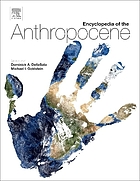 Encyclopedia of the Anthropocene
by
"Encyclopedia of the Anthropocene presents a currency-based, global synthesis cataloguing the impact of humanity's global ecological footprint. Covering a multitude of aspects related to Climate Change, Biodiversity, Contaminants, Geological, Energy and Ethics, leading scientists provide foundational essays that enable researchers to define and scrutinize information, ideas, relationships, meanings and ideas within the Anthropocene concept."
Encyclopedia of the Anthropocene
by
"Encyclopedia of the Anthropocene presents a currency-based, global synthesis cataloguing the impact of humanity's global ecological footprint. Covering a multitude of aspects related to Climate Change, Biodiversity, Contaminants, Geological, Energy and Ethics, leading scientists provide foundational essays that enable researchers to define and scrutinize information, ideas, relationships, meanings and ideas within the Anthropocene concept."
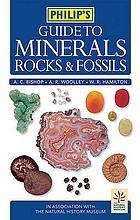 Philip's minerals, rocks & fossils
by
An authoritative and practical identification guide to minerals, rocks and fossils of the world. Published in association with The Natural History Museum, this is an invaluable handbook for amateur collectors and specialists alike.
Philip's minerals, rocks & fossils
by
An authoritative and practical identification guide to minerals, rocks and fossils of the world. Published in association with The Natural History Museum, this is an invaluable handbook for amateur collectors and specialists alike.
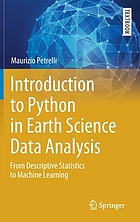 Introduction to Python in earth science data analysis : from descriptive statistics to machine learning
by
This textbook introduces the use of Python programming for exploring and modelling data in the field of Earth Sciences. It drives the reader from his very first steps with Python, like setting up the environment and starting writing the first lines of codes, to proficient use in visualizing, analyzing, and modelling data in the field of Earth Science. Each chapter contains explicative examples of code, and each script is commented in detail. The book is minded for very beginners in Python programming, and it can be used in teaching courses at master or PhD levels. Also, Early careers and experienced researchers who would like to start learning Python programming for the solution of geological problems will benefit the reading of the book.
Introduction to Python in earth science data analysis : from descriptive statistics to machine learning
by
This textbook introduces the use of Python programming for exploring and modelling data in the field of Earth Sciences. It drives the reader from his very first steps with Python, like setting up the environment and starting writing the first lines of codes, to proficient use in visualizing, analyzing, and modelling data in the field of Earth Science. Each chapter contains explicative examples of code, and each script is commented in detail. The book is minded for very beginners in Python programming, and it can be used in teaching courses at master or PhD levels. Also, Early careers and experienced researchers who would like to start learning Python programming for the solution of geological problems will benefit the reading of the book.
 The Story of Earth : the first 4.5 billion years, from stardust to living planet
by
Hailed by The New York Times for writing "with wonderful clarity about science . . . that effortlessly teaches as it zips along," nationally bestselling author Robert M. Hazen offers a radical new approach to Earth history in this intertwined tale of the planet's living and nonliving spheres. With an astrobiologist's imagination, a historian's perspective, and a naturalist's eye, Hazen calls upon twenty-first-century discoveries that have revolutionized geology and enabled scientists to envision Earth's many iterations in vivid detail--from the mile-high lava tides of its infancy to the early organisms responsible for more than two-thirds of the mineral varieties beneath our feet. Lucid, controversial, and on the cutting edge of its field, The Story of Earth is popular science of the highest order. "A sweeping rip-roaring yarn of immense scope, from the birth of the elements in the stars to meditations on the future habitability of our world." -Science "A fascinating story." -Bill McKibben
The Story of Earth : the first 4.5 billion years, from stardust to living planet
by
Hailed by The New York Times for writing "with wonderful clarity about science . . . that effortlessly teaches as it zips along," nationally bestselling author Robert M. Hazen offers a radical new approach to Earth history in this intertwined tale of the planet's living and nonliving spheres. With an astrobiologist's imagination, a historian's perspective, and a naturalist's eye, Hazen calls upon twenty-first-century discoveries that have revolutionized geology and enabled scientists to envision Earth's many iterations in vivid detail--from the mile-high lava tides of its infancy to the early organisms responsible for more than two-thirds of the mineral varieties beneath our feet. Lucid, controversial, and on the cutting edge of its field, The Story of Earth is popular science of the highest order. "A sweeping rip-roaring yarn of immense scope, from the birth of the elements in the stars to meditations on the future habitability of our world." -Science "A fascinating story." -Bill McKibben
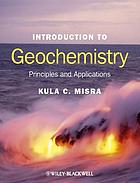 Introduction to Geochemistry : principles and applications
by
INTRODUCTION TO Geochemistry This book is intended to serve as a text for an introductory course in geochemistry for undergraduate/ graduate students with at least an elementary-level background in earth sciences, chemistry, and mathematics. The text, containing 83 tables and 181 figures, covers a wide variety of topics - ranging from atomic structure to chemical and isotopic equilibria to modern biogeochemical cycles - which are divided into four interrelated parts: Crystal Chemistry; Chemical Reactions (and biochemical reactions involving bacteria); Isotope Geochemistry (radiogenic and stable isotopes); and The Earth Supersystem, which includes discussions pertinent to the evolution of the solid Earth, the atmosphere, and the hydrosphere. In keeping with the modern trend in the field of geochemistry, the book emphasizes computational techniques by developing appropriate mathematical relations, solving a variety of problems to illustrate application of the mathematical relations, and leaving a set of questions at the end of each chapter to be solved by students. However, so as not to interrupt the flow of the text, involved chemical concepts and mathematical derivations are separated in the form of boxes. Supplementary materials are packaged into ten appendixes that include a standard-state (298.15 K, 1 bar) thermodynamic data table and a listing of answers to selected chapter-end questions.
Introduction to Geochemistry : principles and applications
by
INTRODUCTION TO Geochemistry This book is intended to serve as a text for an introductory course in geochemistry for undergraduate/ graduate students with at least an elementary-level background in earth sciences, chemistry, and mathematics. The text, containing 83 tables and 181 figures, covers a wide variety of topics - ranging from atomic structure to chemical and isotopic equilibria to modern biogeochemical cycles - which are divided into four interrelated parts: Crystal Chemistry; Chemical Reactions (and biochemical reactions involving bacteria); Isotope Geochemistry (radiogenic and stable isotopes); and The Earth Supersystem, which includes discussions pertinent to the evolution of the solid Earth, the atmosphere, and the hydrosphere. In keeping with the modern trend in the field of geochemistry, the book emphasizes computational techniques by developing appropriate mathematical relations, solving a variety of problems to illustrate application of the mathematical relations, and leaving a set of questions at the end of each chapter to be solved by students. However, so as not to interrupt the flow of the text, involved chemical concepts and mathematical derivations are separated in the form of boxes. Supplementary materials are packaged into ten appendixes that include a standard-state (298.15 K, 1 bar) thermodynamic data table and a listing of answers to selected chapter-end questions.
 Basic Geological Mapping
by
Part of The Geological Field Guide Series, Basic Geological Mapping, 5th Edition is an essential basic guide to field techniques in mapping geology. Now completely revised and updated the book retains the concise clarity which has made it an indispensable instant reference in its previous editions. It provides the reader with all the necessary practical information and techniques that they will need while carrying out work in the field, covering a wide spectrum of different conditions, needs and types of countries. This edition covers new developments in technology including Google Earth and the use of GPS. This is an ideal field guide to geological mapping for 2nd/3rd year undergraduates of Geology, Hydrogeology and Geological Engineering.
Basic Geological Mapping
by
Part of The Geological Field Guide Series, Basic Geological Mapping, 5th Edition is an essential basic guide to field techniques in mapping geology. Now completely revised and updated the book retains the concise clarity which has made it an indispensable instant reference in its previous editions. It provides the reader with all the necessary practical information and techniques that they will need while carrying out work in the field, covering a wide spectrum of different conditions, needs and types of countries. This edition covers new developments in technology including Google Earth and the use of GPS. This is an ideal field guide to geological mapping for 2nd/3rd year undergraduates of Geology, Hydrogeology and Geological Engineering.
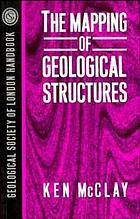 The Mapping of Geological Structures
by
Detailed mapping and analysis of the structural features of rocks enable the 3D geometry of their structures to be reconstructed. The resulting evidence of the stresses and movement patterns which rocks have undergone indicates the processes by which they were formed, and allows evaluation of past deformations of the earth's crust. Written to show how one actually describes, measures and records rock structures such as folds and faults with the emphasis on accuracy, detail and on-going interpretation throughout, this handbook gives students and enthusiasts the practical information and guidance which allows their fieldwork to become vastly more rewarding. "...the author is to be congratulated on producing such an excellent text. The whole range of mapping techniques that an undergraduate student will require are described and the book will still be immense help to post-graduates setting out on their research work. The book represents extremely good value and is thoroughly recommended." --C.R.L. Friend, Mineralogical Magazine
The Mapping of Geological Structures
by
Detailed mapping and analysis of the structural features of rocks enable the 3D geometry of their structures to be reconstructed. The resulting evidence of the stresses and movement patterns which rocks have undergone indicates the processes by which they were formed, and allows evaluation of past deformations of the earth's crust. Written to show how one actually describes, measures and records rock structures such as folds and faults with the emphasis on accuracy, detail and on-going interpretation throughout, this handbook gives students and enthusiasts the practical information and guidance which allows their fieldwork to become vastly more rewarding. "...the author is to be congratulated on producing such an excellent text. The whole range of mapping techniques that an undergraduate student will require are described and the book will still be immense help to post-graduates setting out on their research work. The book represents extremely good value and is thoroughly recommended." --C.R.L. Friend, Mineralogical Magazine
 Foundations of Organic Chemistry
by
This book differs from other organic chemistry textbooks in that it is not focused purely on the needs of students studying premed, but rather for all students studying organic chemistry. It directs the reader to question present assumptions rather than to accept what is told, so the second chapter is largely devoted to spectroscopy (rather than finding it much later on as with most current organic chemistry textbooks). Additionally, after an introduction to spectroscopy, thermodynamics and kinetics, the presentation of structural information of compounds and organic families advances from hydrocarbons to alcohols to aldehydes and ketones and, finally, to carboxylic acids.
Foundations of Organic Chemistry
by
This book differs from other organic chemistry textbooks in that it is not focused purely on the needs of students studying premed, but rather for all students studying organic chemistry. It directs the reader to question present assumptions rather than to accept what is told, so the second chapter is largely devoted to spectroscopy (rather than finding it much later on as with most current organic chemistry textbooks). Additionally, after an introduction to spectroscopy, thermodynamics and kinetics, the presentation of structural information of compounds and organic families advances from hydrocarbons to alcohols to aldehydes and ketones and, finally, to carboxylic acids.
 Computational Organic Chemistry
by
The Second Edition demonstrates how computational chemistry continues to shed new light on organic chemistry The Second Edition of author Steven Bachrach's highly acclaimed Computational Organic Chemistry reflects the tremendous advances in computational methods since the publication of the First Edition, explaining how these advances have shaped our current understanding of organic chemistry. Readers familiar with the First Edition will discover new and revised material in all chapters, including new case studies and examples. There's also a new chapter dedicated to computational enzymology that demonstrates how principles of quantum mechanics applied to organic reactions can be extended to biological systems. Computational Organic Chemistry covers a broad range of problems and challenges in organic chemistry where computational chemistry has played a significant role in developing new theories or where it has provided additional evidence to support experimentally derived insights. Readers do not have to be experts in quantum mechanics. The first chapter of the book introduces all of the major theoretical concepts and definitions of quantum mechanics followed by a chapter dedicated to computed spectral properties and structure identification. Next, the book covers: Fundamentals of organic chemistry Pericyclic reactions Diradicals and carbenes Organic reactions of anions Solution-phase organic chemistry Organic reaction dynamics The final chapter offers new computational approaches to understand enzymes. The book features interviews with preeminent computational chemists, underscoring the role of collaboration in developing new science. Three of these interviews are new to this edition. Readers interested in exploring individual topics in greater depth should turn to the book's ancillary website www.comporgchem.com, which offers updates and supporting information. Plus, every cited article that is available in electronic form is listed with a link to the article.
Computational Organic Chemistry
by
The Second Edition demonstrates how computational chemistry continues to shed new light on organic chemistry The Second Edition of author Steven Bachrach's highly acclaimed Computational Organic Chemistry reflects the tremendous advances in computational methods since the publication of the First Edition, explaining how these advances have shaped our current understanding of organic chemistry. Readers familiar with the First Edition will discover new and revised material in all chapters, including new case studies and examples. There's also a new chapter dedicated to computational enzymology that demonstrates how principles of quantum mechanics applied to organic reactions can be extended to biological systems. Computational Organic Chemistry covers a broad range of problems and challenges in organic chemistry where computational chemistry has played a significant role in developing new theories or where it has provided additional evidence to support experimentally derived insights. Readers do not have to be experts in quantum mechanics. The first chapter of the book introduces all of the major theoretical concepts and definitions of quantum mechanics followed by a chapter dedicated to computed spectral properties and structure identification. Next, the book covers: Fundamentals of organic chemistry Pericyclic reactions Diradicals and carbenes Organic reactions of anions Solution-phase organic chemistry Organic reaction dynamics The final chapter offers new computational approaches to understand enzymes. The book features interviews with preeminent computational chemists, underscoring the role of collaboration in developing new science. Three of these interviews are new to this edition. Readers interested in exploring individual topics in greater depth should turn to the book's ancillary website www.comporgchem.com, which offers updates and supporting information. Plus, every cited article that is available in electronic form is listed with a link to the article.
 Methods in Physical Chemistry
by
Thanks to the progress made in instruments and techniques, the methods in physical chemistry have developed rapidly over the past few decades, making them increasingly valuable for scientists of many disciplines. These two must-have volumes meet the needs of the scientific community for a thorough overview of all the important methods currently used. As such, this work bridges the gap between standard textbooks and review articles, covering a large number of methods, as well as the motivation behind their use. A uniform approach is adopted throughout both volumes, while the critical comparison of the advantages and disadvantages of each method makes this a valuable reference for physical chemists and other scientists working with these techniques.
Methods in Physical Chemistry
by
Thanks to the progress made in instruments and techniques, the methods in physical chemistry have developed rapidly over the past few decades, making them increasingly valuable for scientists of many disciplines. These two must-have volumes meet the needs of the scientific community for a thorough overview of all the important methods currently used. As such, this work bridges the gap between standard textbooks and review articles, covering a large number of methods, as well as the motivation behind their use. A uniform approach is adopted throughout both volumes, while the critical comparison of the advantages and disadvantages of each method makes this a valuable reference for physical chemists and other scientists working with these techniques.
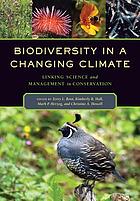 Biodiversity in a Changing Climate
by
One major consequence of climate change is abrupt, dramatic changes in regional biodiversity. Even if the most optimistic scenarios for mitigating climate change transpire, the fate of many wild species rests on the shoulders of people engaged in conservation planning, management, and policy. Providing managers with the latest and most useful climate change research is critical and requires challenging the conventional divide between scientists and managers. Biodiversity in a Changing Climate promotes dialogue among scientists, decision makers, and managers who are grappling with climate-related threats to species and ecosystems in diverse forms. The book includes case studies and best practices used to address impacts related to climate change across a broad spectrum of species and habitats--from coastal krill and sea urchins to prairie grass and mountain bumblebees. Focused on California, the issues and strategies presented in this book will prove relevant to regions across the West, as well as other regions, and provide a framework for how scientists and managers in any region can bridge the communication divide to manage biodiversity in a rapidly changing world. Biodiversity and a Changing Climate will prove an indispensable guide to students, scientists, and professionals engaged in conservation and resource management.
Biodiversity in a Changing Climate
by
One major consequence of climate change is abrupt, dramatic changes in regional biodiversity. Even if the most optimistic scenarios for mitigating climate change transpire, the fate of many wild species rests on the shoulders of people engaged in conservation planning, management, and policy. Providing managers with the latest and most useful climate change research is critical and requires challenging the conventional divide between scientists and managers. Biodiversity in a Changing Climate promotes dialogue among scientists, decision makers, and managers who are grappling with climate-related threats to species and ecosystems in diverse forms. The book includes case studies and best practices used to address impacts related to climate change across a broad spectrum of species and habitats--from coastal krill and sea urchins to prairie grass and mountain bumblebees. Focused on California, the issues and strategies presented in this book will prove relevant to regions across the West, as well as other regions, and provide a framework for how scientists and managers in any region can bridge the communication divide to manage biodiversity in a rapidly changing world. Biodiversity and a Changing Climate will prove an indispensable guide to students, scientists, and professionals engaged in conservation and resource management.
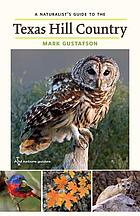 A naturalist's guide to the Texas Hill Country
by
In this guide, biologist Mark Gustafson introduces residents and visitors to the history, geology, water resources, plants, and animals found in the nineteen counties occupying the eastern part of the Edwards Plateau, the heart of the Hill Country. He profiles three hundred of the most common and unique species from all of the major groups of plants and animals: trees, shrubs, wildflowers, cacti, vines, grasses, ferns, fungi, lichens, birds, mammals, reptiles, amphibians, fishes, and invertebrates. Color photographs are included for each species along with a brief description. He closes with a.
A naturalist's guide to the Texas Hill Country
by
In this guide, biologist Mark Gustafson introduces residents and visitors to the history, geology, water resources, plants, and animals found in the nineteen counties occupying the eastern part of the Edwards Plateau, the heart of the Hill Country. He profiles three hundred of the most common and unique species from all of the major groups of plants and animals: trees, shrubs, wildflowers, cacti, vines, grasses, ferns, fungi, lichens, birds, mammals, reptiles, amphibians, fishes, and invertebrates. Color photographs are included for each species along with a brief description. He closes with a.
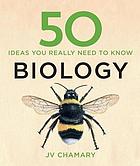 50 Biology Ideas You Really Need to Know
by
"50 Biology Ideas You Really Need to Know" is your guide to the most significant and stimulating questions in the study of life. Why do species evolve? Can characteristics be inherited without DNA? Are all organisms made of cells? What makes us human? This book provides succinct answers to all these questions, and many more, in 50 lucid and engaging essays that cover both classic experiments and the latest research. From the mysteries of sex and sleep, from mass extinction to immunity, "50 Biology Ideas You Really Need to Know" will open your eyes to the fundamental processes that are vital to life on Earth, including how genes control the growth and behaviour of living things, how a body develops from a single cell, and how environmental forces create natural diversity through evolution. Featuring key concepts explained in simple terms, and with clear diagrams and timelines showing major scientific discoveries within their historical context, this book will give you a complete overview of a fascinating subject. Contents include: Evolution, Genes, Homeostasis, Endosymbiosis, Sex, Multicellularity, Nerves, Genetic Drift, Speciation, Convergent Evolution, Pollination, Mimicry, Laws of Inheritance, DNA, Alternative Splicing, Viruses, Epigenetics, Photosynthesis, Cancer, Differentiation, Regeneration, Morphogenesis, Memory, Sleep, Ageing, Consciousness and the Gaia Hypothesis.
50 Biology Ideas You Really Need to Know
by
"50 Biology Ideas You Really Need to Know" is your guide to the most significant and stimulating questions in the study of life. Why do species evolve? Can characteristics be inherited without DNA? Are all organisms made of cells? What makes us human? This book provides succinct answers to all these questions, and many more, in 50 lucid and engaging essays that cover both classic experiments and the latest research. From the mysteries of sex and sleep, from mass extinction to immunity, "50 Biology Ideas You Really Need to Know" will open your eyes to the fundamental processes that are vital to life on Earth, including how genes control the growth and behaviour of living things, how a body develops from a single cell, and how environmental forces create natural diversity through evolution. Featuring key concepts explained in simple terms, and with clear diagrams and timelines showing major scientific discoveries within their historical context, this book will give you a complete overview of a fascinating subject. Contents include: Evolution, Genes, Homeostasis, Endosymbiosis, Sex, Multicellularity, Nerves, Genetic Drift, Speciation, Convergent Evolution, Pollination, Mimicry, Laws of Inheritance, DNA, Alternative Splicing, Viruses, Epigenetics, Photosynthesis, Cancer, Differentiation, Regeneration, Morphogenesis, Memory, Sleep, Ageing, Consciousness and the Gaia Hypothesis.
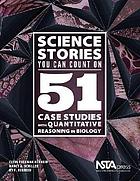 Science Stories You Can Count On: 51 case studies with quantitative reasoning in biology
by
This book features real case studies with quantitative reasoning skills enmeshed in the story line to help teach biology and show its relevance to the lives of future citizens.
Science Stories You Can Count On: 51 case studies with quantitative reasoning in biology
by
This book features real case studies with quantitative reasoning skills enmeshed in the story line to help teach biology and show its relevance to the lives of future citizens.
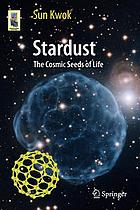 Stardust: the cosmic seeds of life
by
How did life originate on Earth? For over 50 years, scientists believed that life was the result of a chemical reaction involving simple molecules such as methane and ammonia cooking in a primordial soup. Recent space observations have revealed that old stars are capable of making very complex organic compounds. At some point in their evolution, stars eject those organics and spread them all over the Milky Way galaxy. There is evidence that these organic dust particles actually reached the early Solar System. Through bombardments by comets and asteroids, the young Earth inherited significant amounts of stardust. Was the development of life assisted by the arrival of these extraterrestrial materials? In this book, the author describes stunning discoveries in astronomy and solar system science made over the last 10 years that have yielded a new perspective on the origin of life. Other interesting topics discussed in this book The discovery of diamonds and other gemstones in space The origin of oil Neon signs and fluorescent lights in space Smoke from the stars Stardust in our hands Where oceans come from The possibility of bacteria in space
Stardust: the cosmic seeds of life
by
How did life originate on Earth? For over 50 years, scientists believed that life was the result of a chemical reaction involving simple molecules such as methane and ammonia cooking in a primordial soup. Recent space observations have revealed that old stars are capable of making very complex organic compounds. At some point in their evolution, stars eject those organics and spread them all over the Milky Way galaxy. There is evidence that these organic dust particles actually reached the early Solar System. Through bombardments by comets and asteroids, the young Earth inherited significant amounts of stardust. Was the development of life assisted by the arrival of these extraterrestrial materials? In this book, the author describes stunning discoveries in astronomy and solar system science made over the last 10 years that have yielded a new perspective on the origin of life. Other interesting topics discussed in this book The discovery of diamonds and other gemstones in space The origin of oil Neon signs and fluorescent lights in space Smoke from the stars Stardust in our hands Where oceans come from The possibility of bacteria in space
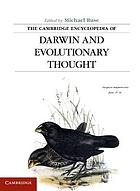 The Cambridge encyclopedia of Darwin and evolutionary thought
by
"This volume is a comprehensive reference work on the life, labors and influence of the great evolutionist Charles Darwin. With more than sixty essays written by an international group representing the leading scholars in the field, this is the definitive work on Darwin. It covers the background to Darwin's discovery of the theory of evolution through natural selection, the work he produced and his contemporaries' reactions to it, and evaluates his influence on science in the 150 years since the publication of Origin of Species. It also explores the implications of Darwin's discoveries in religion, politics, gender, literature, culture, philosophy and medicine, critically evaluating Darwin's legacy. Fully illustrated and clearly written, it is suitable for scholars and students as well as the general reader. The wealth of information it provides about the history of evolutionary thought makes it a crucial resource for understanding the controversies that surround evolution today"-- Provided by publisher
The Cambridge encyclopedia of Darwin and evolutionary thought
by
"This volume is a comprehensive reference work on the life, labors and influence of the great evolutionist Charles Darwin. With more than sixty essays written by an international group representing the leading scholars in the field, this is the definitive work on Darwin. It covers the background to Darwin's discovery of the theory of evolution through natural selection, the work he produced and his contemporaries' reactions to it, and evaluates his influence on science in the 150 years since the publication of Origin of Species. It also explores the implications of Darwin's discoveries in religion, politics, gender, literature, culture, philosophy and medicine, critically evaluating Darwin's legacy. Fully illustrated and clearly written, it is suitable for scholars and students as well as the general reader. The wealth of information it provides about the history of evolutionary thought makes it a crucial resource for understanding the controversies that surround evolution today"-- Provided by publisher
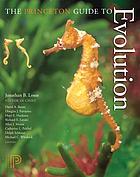 The Princeton Guide to Evolution
by
The essential one-volume reference to evolution The Princeton Guide to Evolution is a comprehensive, concise, and authoritative reference to the major subjects and key concepts in evolutionary biology, from genes to mass extinctions. Edited by a distinguished team of evolutionary biologists, with contributions from leading researchers, the guide contains some 100 clear, accurate, and up-to-date articles on the most important topics in seven major areas: phylogenetics and the history of life; selection and adaptation; evolutionary processes; genes, genomes, and phenotypes; speciation and macroevolution; evolution of behavior, society, and humans; and evolution and modern society. Complete with more than 100 illustrations (including eight pages in color), glossaries of key terms, suggestions for further reading on each topic, and an index, this is an essential volume for undergraduate and graduate students, scientists in related fields, and anyone else with a serious interest in evolution. Explains key topics in some 100 concise and authoritative articles written by a team of leading evolutionary biologists Contains more than 100 illustrations, including eight pages in color Each article includes an outline, glossary, bibliography, and cross-references Covers phylogenetics and the history of life; selection and adaptation; evolutionary processes; genes, genomes, and phenotypes; speciation and macroevolution; evolution of behavior, society, and humans; and evolution and modern society
The Princeton Guide to Evolution
by
The essential one-volume reference to evolution The Princeton Guide to Evolution is a comprehensive, concise, and authoritative reference to the major subjects and key concepts in evolutionary biology, from genes to mass extinctions. Edited by a distinguished team of evolutionary biologists, with contributions from leading researchers, the guide contains some 100 clear, accurate, and up-to-date articles on the most important topics in seven major areas: phylogenetics and the history of life; selection and adaptation; evolutionary processes; genes, genomes, and phenotypes; speciation and macroevolution; evolution of behavior, society, and humans; and evolution and modern society. Complete with more than 100 illustrations (including eight pages in color), glossaries of key terms, suggestions for further reading on each topic, and an index, this is an essential volume for undergraduate and graduate students, scientists in related fields, and anyone else with a serious interest in evolution. Explains key topics in some 100 concise and authoritative articles written by a team of leading evolutionary biologists Contains more than 100 illustrations, including eight pages in color Each article includes an outline, glossary, bibliography, and cross-references Covers phylogenetics and the history of life; selection and adaptation; evolutionary processes; genes, genomes, and phenotypes; speciation and macroevolution; evolution of behavior, society, and humans; and evolution and modern society
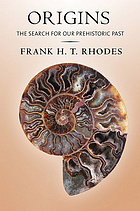 Origins : the search for our prehistoric past
by
"Fossils are the fragments from which, piece by laborious piece, the great mosaic of the history of life has been constructed. Here and there, we can supplement these meager scraps by the use of biochemical markers or geochemical signatures that add useful information, but, even with such additional help, our reconstructions and our models of descent are often tentative. For the fossil record is, as we have seen, as biased as it is incomplete. But fragmentary, selective, and biased though it is, the fossil record, with all its imperfections, is still a treasure. Though whole chapters are missing, many pages lost, and the earliest pages so damaged as to be, as yet, virtually unreadable, this--the greatest biography of all--is one in whose closing pages we find ourselves."--OriginsIn Origins, Frank H.T. Rhodes explores the origin and evolution of living things, the changing environments in which they have developed, and the challenges we now face on an increasingly crowded and polluted planet. Rhodes argues that the future well-being of our burgeoning population depends in no small part on our understanding of life's past, its long and slow development, and its intricate interdependencies. Rhodes's accessible and extensively illustrated treatment of the origins narrative describes the nature of the search for prehistoric life, the significance of geologic time, the origin of life, the emergence and spread of flora and fauna, the evolution of primates, and the emergence of modern humans.
Origins : the search for our prehistoric past
by
"Fossils are the fragments from which, piece by laborious piece, the great mosaic of the history of life has been constructed. Here and there, we can supplement these meager scraps by the use of biochemical markers or geochemical signatures that add useful information, but, even with such additional help, our reconstructions and our models of descent are often tentative. For the fossil record is, as we have seen, as biased as it is incomplete. But fragmentary, selective, and biased though it is, the fossil record, with all its imperfections, is still a treasure. Though whole chapters are missing, many pages lost, and the earliest pages so damaged as to be, as yet, virtually unreadable, this--the greatest biography of all--is one in whose closing pages we find ourselves."--OriginsIn Origins, Frank H.T. Rhodes explores the origin and evolution of living things, the changing environments in which they have developed, and the challenges we now face on an increasingly crowded and polluted planet. Rhodes argues that the future well-being of our burgeoning population depends in no small part on our understanding of life's past, its long and slow development, and its intricate interdependencies. Rhodes's accessible and extensively illustrated treatment of the origins narrative describes the nature of the search for prehistoric life, the significance of geologic time, the origin of life, the emergence and spread of flora and fauna, the evolution of primates, and the emergence of modern humans.
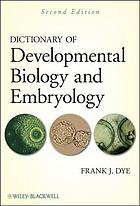 Dictionary of Developmental Biology and Embryology
by
A newly revised edition of the standard reference for the field today--updated with new terms, major discoveries, significant scientists, and illustrations Developmental biology is the study of the mechanisms of development, differentiation, and growth in animals and plants at the molecular, cellular, and genetic levels. The discipline has gained prominence in part due to new interdisciplinary approaches and advances in technology, which have led to the rapid emergence of new concepts and words. The Dictionary of Developmental Biology and Embryology, Second Edition is the first comprehensive reference focused on the field's terms, research, history, and people. This authoritative A-to-Z resource covers classical morphological and cytological terms along with those from modern genetics and molecular biology. Extensively cross-referenced, the Dictionary includes definitions of terms, explanations of concepts, and biographies of historical figures. Comparative aspects are described in order to provide a sense of the evolution of structures, and topics range from fundamental terminology, germ layers, and induction to RNAi, evo-devo, stem cell differentiation, and more. Readers will find such features of embryology and developmental biology as: Vertebrates Invertebrates Plants Developmental genetics Evolutionary developmental biology Molecular developmental biology Medical embryology The author's premium on accessibility allows readers at all levels to enhance their vocabulary in their field and understand terminology beyond their specific focus. Researchers and students in developmental biology, cell biology, developmental genetics, and embryology will find the dictionary to be a vital resource.
Dictionary of Developmental Biology and Embryology
by
A newly revised edition of the standard reference for the field today--updated with new terms, major discoveries, significant scientists, and illustrations Developmental biology is the study of the mechanisms of development, differentiation, and growth in animals and plants at the molecular, cellular, and genetic levels. The discipline has gained prominence in part due to new interdisciplinary approaches and advances in technology, which have led to the rapid emergence of new concepts and words. The Dictionary of Developmental Biology and Embryology, Second Edition is the first comprehensive reference focused on the field's terms, research, history, and people. This authoritative A-to-Z resource covers classical morphological and cytological terms along with those from modern genetics and molecular biology. Extensively cross-referenced, the Dictionary includes definitions of terms, explanations of concepts, and biographies of historical figures. Comparative aspects are described in order to provide a sense of the evolution of structures, and topics range from fundamental terminology, germ layers, and induction to RNAi, evo-devo, stem cell differentiation, and more. Readers will find such features of embryology and developmental biology as: Vertebrates Invertebrates Plants Developmental genetics Evolutionary developmental biology Molecular developmental biology Medical embryology The author's premium on accessibility allows readers at all levels to enhance their vocabulary in their field and understand terminology beyond their specific focus. Researchers and students in developmental biology, cell biology, developmental genetics, and embryology will find the dictionary to be a vital resource.
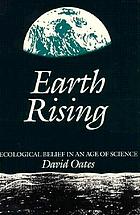 Earth Rising: ecological belief in an age of science
by
Earth Rising: ecological belief in an age of science
by
 The Balance of Nature : ecology's enduring myth
by
The idea of a balance of nature has been a dominant part of Western philosophy since before Aristotle, and it persists in the public imagination and even among some ecologists today. In this lively and thought-provoking book, John Kricher demonstrates that nature in fact is not in balance, nor has it ever been at any stage in Earth's history. He explains how and why this notion of a natural world in balance has endured for so long, and he shows why, in these times of extraordinary human influence on the planet's ecosystems, it is critical that we accept and understand that evolution is a fact of life, and that ecology is far more dynamic than we ever imagined. The Balance of Nature traces the fascinating history of the science of ecology and evolutionary biology, from the discipline's early innovators to the advent of Darwin and evolution, to the brilliant and inquisitive scientific minds of today. Blending insights and entertaining stories from his own remarkable life in science, Kricher reveals how evolution is a powerful engine that drives ecological change, how nature is constantly in flux and, in effect, quite naturally out of balance--and how notions to the contrary are misguided and ultimately hazardous to us all. The Balance of Nature forcefully argues that an understanding of the dynamic nature of ecology and evolution is essential to formulating policies of environmental ethics to guide humanity toward a more responsible stewardship of our planet's ecosystems.
The Balance of Nature : ecology's enduring myth
by
The idea of a balance of nature has been a dominant part of Western philosophy since before Aristotle, and it persists in the public imagination and even among some ecologists today. In this lively and thought-provoking book, John Kricher demonstrates that nature in fact is not in balance, nor has it ever been at any stage in Earth's history. He explains how and why this notion of a natural world in balance has endured for so long, and he shows why, in these times of extraordinary human influence on the planet's ecosystems, it is critical that we accept and understand that evolution is a fact of life, and that ecology is far more dynamic than we ever imagined. The Balance of Nature traces the fascinating history of the science of ecology and evolutionary biology, from the discipline's early innovators to the advent of Darwin and evolution, to the brilliant and inquisitive scientific minds of today. Blending insights and entertaining stories from his own remarkable life in science, Kricher reveals how evolution is a powerful engine that drives ecological change, how nature is constantly in flux and, in effect, quite naturally out of balance--and how notions to the contrary are misguided and ultimately hazardous to us all. The Balance of Nature forcefully argues that an understanding of the dynamic nature of ecology and evolution is essential to formulating policies of environmental ethics to guide humanity toward a more responsible stewardship of our planet's ecosystems.
 Ecology: from individuals to ecosystems
by
Begon, Townsend, and Harper's Ecology has long been regarded as the definitive textbook on all aspects of ecology. This new edition provides a comprehensive treatment of the subject, from the first principles of ecology to the current state of the field, and aims to improve students' preparedness to address the environmental problems of the new millennium. Thoroughly revised and updated, this fourth edition includes: three new chapters on applied ecology, reflecting a rigorous, scientific approach to the ecological problems now facing mankind discussion of over 800 new studies, updating the text throughout an updated, user-friendly design with margin notes and chapter summaries that serve as study aids The resulting textbook is easy to use, lucid and up-to-date, and is the essential reference for all students whose degree program includes ecology and for practicing ecologists.
Ecology: from individuals to ecosystems
by
Begon, Townsend, and Harper's Ecology has long been regarded as the definitive textbook on all aspects of ecology. This new edition provides a comprehensive treatment of the subject, from the first principles of ecology to the current state of the field, and aims to improve students' preparedness to address the environmental problems of the new millennium. Thoroughly revised and updated, this fourth edition includes: three new chapters on applied ecology, reflecting a rigorous, scientific approach to the ecological problems now facing mankind discussion of over 800 new studies, updating the text throughout an updated, user-friendly design with margin notes and chapter summaries that serve as study aids The resulting textbook is easy to use, lucid and up-to-date, and is the essential reference for all students whose degree program includes ecology and for practicing ecologists.
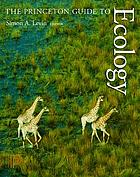 The Princeton Guide to Ecology
by
The Princeton Guide to Ecology is a concise, authoritative one-volume reference to the field's major subjects and key concepts. Edited by eminent ecologist Simon Levin, with contributions from an international team of leading ecologists, the book contains more than ninety clear, accurate, and up-to-date articles on the most important topics within seven major areas: autecology, population ecology, communities and ecosystems, landscapes and the biosphere, conservation biology, ecosystem services, and biosphere management. Complete with more than 200 illustrations (including sixteen pages in color), a glossary of key terms, a chronology of milestones in the field, suggestions for further reading on each topic, and an index, this is an essential volume for undergraduate and graduate students, research ecologists, scientists in related fields, policymakers, and anyone else with a serious interest in ecology. Explains key topics in one concise and authoritative volume Features more than ninety articles written by an international team of leading ecologists Contains more than 200 illustrations, including sixteen pages in color Includes glossary, chronology, suggestions for further reading, and index Covers autecology, population ecology, communities and ecosystems, landscapes and the biosphere, conservation biology, ecosystem services, and biosphere management
The Princeton Guide to Ecology
by
The Princeton Guide to Ecology is a concise, authoritative one-volume reference to the field's major subjects and key concepts. Edited by eminent ecologist Simon Levin, with contributions from an international team of leading ecologists, the book contains more than ninety clear, accurate, and up-to-date articles on the most important topics within seven major areas: autecology, population ecology, communities and ecosystems, landscapes and the biosphere, conservation biology, ecosystem services, and biosphere management. Complete with more than 200 illustrations (including sixteen pages in color), a glossary of key terms, a chronology of milestones in the field, suggestions for further reading on each topic, and an index, this is an essential volume for undergraduate and graduate students, research ecologists, scientists in related fields, policymakers, and anyone else with a serious interest in ecology. Explains key topics in one concise and authoritative volume Features more than ninety articles written by an international team of leading ecologists Contains more than 200 illustrations, including sixteen pages in color Includes glossary, chronology, suggestions for further reading, and index Covers autecology, population ecology, communities and ecosystems, landscapes and the biosphere, conservation biology, ecosystem services, and biosphere management
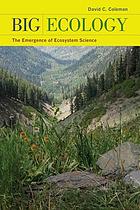 Big Ecology : the emergence of ecosystem science
by
In Big Ecology, David C. Coleman documents his historically fruitful ecological collaborations in the early years of studying large ecosystems in the United States. As Coleman explains, the concept of the ecosystem--a local biological community and its interactions with its environment--has given rise to many institutions and research programs, like the National Science Foundation's program for Long Term Ecological Research. Coleman's insider account of this important and fascinating trend toward big science takes us from the paradigm of collaborative interdisciplinary research, starting with the International Geophysical Year (IGY) of 1957, through the International Biological Program (IBP) of the late 1960s and early 1970s, to the Long-Term Ecological Research (LTER) programs of the 1980s.
Big Ecology : the emergence of ecosystem science
by
In Big Ecology, David C. Coleman documents his historically fruitful ecological collaborations in the early years of studying large ecosystems in the United States. As Coleman explains, the concept of the ecosystem--a local biological community and its interactions with its environment--has given rise to many institutions and research programs, like the National Science Foundation's program for Long Term Ecological Research. Coleman's insider account of this important and fascinating trend toward big science takes us from the paradigm of collaborative interdisciplinary research, starting with the International Geophysical Year (IGY) of 1957, through the International Biological Program (IBP) of the late 1960s and early 1970s, to the Long-Term Ecological Research (LTER) programs of the 1980s.
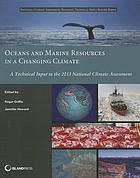 Oceans and marine resources in a changing climate : a technical input to the 2013 national climate assessment
by
Prepared for the 2013 National Climate Assessment and a landmark study in terms of its breadth and depth of coverage, Oceans and Marine Resources in a Changing Climate is the result of a collaboration among numerous local, state, federal, and nongovernmental agencies to develop a comprehensive, state of the art look at the effects of climate change on the oceans and marine ecosystems under U.S. jurisdiction. This book provides an assessment of scientific knowledge of the current and projected impacts of climate change and ocean acidification on the physical, chemical, and biological components and human uses of marine ecosystems under U.S. jurisdiction. It also provides assessment of the international implications for the U.S. due to climate impacts on ocean ecosystems and of efforts to prepare for and adapt to climate and acidification impacts on ocean ecosystem, including · Climate-Driven Physical and Chemical Changes in Marine Ecosystems · Impacts of Climate Change on Marine Organisms · Impacts of Climate Change on Human Uses of the Ocean · International Implications of Climate Change · Ocean Management Challenges, Adaptation Approaches, and Opportunities in a Changing Climate · Sustaining the Assessment of Climate Impacts on Oceans and Marine Resources Rich in science and case studies, it examines the latest climate change impacts, scenarios, vulnerabilities, and adaptive capacity and offers decision makers and stakeholders a substantial basis from which to make informed choices that will affect the well-being of the region's inhabitants in the decades to come.
Oceans and marine resources in a changing climate : a technical input to the 2013 national climate assessment
by
Prepared for the 2013 National Climate Assessment and a landmark study in terms of its breadth and depth of coverage, Oceans and Marine Resources in a Changing Climate is the result of a collaboration among numerous local, state, federal, and nongovernmental agencies to develop a comprehensive, state of the art look at the effects of climate change on the oceans and marine ecosystems under U.S. jurisdiction. This book provides an assessment of scientific knowledge of the current and projected impacts of climate change and ocean acidification on the physical, chemical, and biological components and human uses of marine ecosystems under U.S. jurisdiction. It also provides assessment of the international implications for the U.S. due to climate impacts on ocean ecosystems and of efforts to prepare for and adapt to climate and acidification impacts on ocean ecosystem, including · Climate-Driven Physical and Chemical Changes in Marine Ecosystems · Impacts of Climate Change on Marine Organisms · Impacts of Climate Change on Human Uses of the Ocean · International Implications of Climate Change · Ocean Management Challenges, Adaptation Approaches, and Opportunities in a Changing Climate · Sustaining the Assessment of Climate Impacts on Oceans and Marine Resources Rich in science and case studies, it examines the latest climate change impacts, scenarios, vulnerabilities, and adaptive capacity and offers decision makers and stakeholders a substantial basis from which to make informed choices that will affect the well-being of the region's inhabitants in the decades to come.
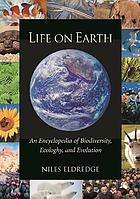 Life on Earth: an encyclopedia of biodiversity, ecology, and evolution [2 Volumes]
by
An examination of nature's extraordinary biological diversity and the human activities that threaten it.Life on Earth: An Encyclopedia of Biodiversity, Ecology, and Evolution tackles the critical issue for humanity in the 21st century--our ever more menacing impact on the environment. This two-volume, illustrated set, edited by American Museum of Natural History curator Niles Eldredge, begins with biodiversity, the complex planetary web of life that has emerged through three billion years of evolution. How does it work? And why is its continued health critical to the planet and to ourselves?More than 50 top scholars examine every form of life from amoebae to elephants, from plankton to whales. But Life on Earth is more than a catalog of species. An A-Z survey explores the myriad ways humanity is diminishing that biodiversity, from industrialization to natural habitat destruction, from overpopulation in the developing world to an unsustainable consumer lifestyle in the West. Life on Earth is the essential reference work for anyone curious about our planet's extraordinary diversity of life and the unprecedented threats it faces.
Life on Earth: an encyclopedia of biodiversity, ecology, and evolution [2 Volumes]
by
An examination of nature's extraordinary biological diversity and the human activities that threaten it.Life on Earth: An Encyclopedia of Biodiversity, Ecology, and Evolution tackles the critical issue for humanity in the 21st century--our ever more menacing impact on the environment. This two-volume, illustrated set, edited by American Museum of Natural History curator Niles Eldredge, begins with biodiversity, the complex planetary web of life that has emerged through three billion years of evolution. How does it work? And why is its continued health critical to the planet and to ourselves?More than 50 top scholars examine every form of life from amoebae to elephants, from plankton to whales. But Life on Earth is more than a catalog of species. An A-Z survey explores the myriad ways humanity is diminishing that biodiversity, from industrialization to natural habitat destruction, from overpopulation in the developing world to an unsustainable consumer lifestyle in the West. Life on Earth is the essential reference work for anyone curious about our planet's extraordinary diversity of life and the unprecedented threats it faces.
 Chemical Ecology: the chemistry of biotic interaction
by
Chemical signals among organisms form "a vast communicative interplay, fundamental to the fabric of life," in the words of one expert. Chemical ecology is the the discipline that seeks to understand these interactions-to use biology in the search for new substances of potential benefit to humankind. This book highlights selected research areas of medicinal and agricultural importance. Leading experts review the chemistry of Insect defense and its applications to pest control. Phyletic dominance--the survival success of insects. Social regulation, with ant societies as a model of multicomponent signaling systems. Eavesdropping, alarm, and deceit--the array of strategies used by insects to find and lure prey. Reproduction--from the gamete attraction to courtship nd sexual selection. The chemistry of intracellular immunosuppression. Topics also include the appropriation of dietary factors for defense and communication; the use of chemical signals in the marine environment; the role of the olfactory system in chemical analysis; and the interaction of polydnaviruses, endoparasites, and the immune system of the host.
Chemical Ecology: the chemistry of biotic interaction
by
Chemical signals among organisms form "a vast communicative interplay, fundamental to the fabric of life," in the words of one expert. Chemical ecology is the the discipline that seeks to understand these interactions-to use biology in the search for new substances of potential benefit to humankind. This book highlights selected research areas of medicinal and agricultural importance. Leading experts review the chemistry of Insect defense and its applications to pest control. Phyletic dominance--the survival success of insects. Social regulation, with ant societies as a model of multicomponent signaling systems. Eavesdropping, alarm, and deceit--the array of strategies used by insects to find and lure prey. Reproduction--from the gamete attraction to courtship nd sexual selection. The chemistry of intracellular immunosuppression. Topics also include the appropriation of dietary factors for defense and communication; the use of chemical signals in the marine environment; the role of the olfactory system in chemical analysis; and the interaction of polydnaviruses, endoparasites, and the immune system of the host.
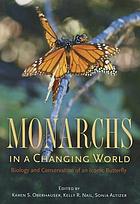 Monarchs in a Changing World
by
Monarch butterflies are among the most popular insect species in the world and are an icon for conservation groups and environmental education programs. Monarch caterpillars and adults are easily recognizable as welcome visitors to gardens in North America and beyond, and their spectacular migration in eastern North America (from breeding locations in Canada and the United States to overwintering sites in Mexico) has captured the imagination of the public.Monarch migration, behavior, and chemical ecology have been studied for decades. Yet many aspects of monarch biology have come to light in only the past few years. These aspects include questions regarding large-scale trends in monarch population sizes, monarch interactions with pathogens and insect predators, and monarch molecular genetics and large-scale evolution. A growing number of current research findings build on the observations of citizen scientists, who monitor monarch migration, reproduction, survival, and disease. Monarchs face new threats from humans as they navigate a changing landscape marked by deforestation, pesticides, genetically modified crops, and a changing climate, all of which place the future of monarchs and their amazing migration in peril. To meet the demand for a timely synthesis of monarch biology, conservation and outreach, Monarchs in a Changing World summarizes recent developments in scientific research, highlights challenges and responses to threats to monarch conservation, and showcases the many ways that monarchs are used in citizen science programs, outreach, and education. It examines issues pertaining to the eastern and western North American migratory populations, as well as to monarchs in South America, the Pacific and Caribbean Islands, and Europe. The target audience includes entomologists, population biologists, conservation policymakers, and K-12 teachers.Contributors: Anurag A. Agrawal, Cornell University; Jared G. Ali, Michigan State University; Sonia Altizer, University of Georgia; Michael C. Anderson, Eden Prairie, Minnesota; Sophia M. Anderson, Eden Prairie, Minnesota; Kim Bailey, Georgia Department of Natural Resources; Rebecca Batalden, University of Minnesota; Kristen A. Baum, Oklahoma State University; Scott Hoffman Black, Xerces Society for Invertebrate Conservation; Brianna Borders, Xerces Society for Invertebrate Conservation; Lincoln P. Brower, Sweet Briar College; Wendy Caldwell, University of Minnesota; Mariana Cantú-Férnandez, Universidad Nacional Autónoma de México; Nicola Chamberlain, Harvard University; Sonya Charest, Montreal Insectarium; Andrew K. Davis, University of Georgia; Alma De Anda, Covina, California; Guadalupe del Rio Pesado, Alternare, A.C., Mexico; Janet Kudell-Ekstrum, USDA Forest Service; Linda S. Fink, Sweet Briar College; Mark Fishbein, Oklahoma State University; Juan Fernández-Haeger, University of Córdoba, Spain; Eligio García Serrano, Fondo Monarca, Mexico; Mark Garland, Cape May Monarch Monitoring Project; Brian Hayes, Monarch Teacher Network; Elizabeth Howard, Journey North; Mark D. Hunter, University of Michigan; Sarina Jepsen, Xerces Society for Invertebrate Conservation; Diego Jordano, University of Córdoba, Spain; Matthew C. Kaiser, University of Minnesota; Ridlon J. Kiphart, Texas Master Naturalists; Marcus R. Kronforst, University of Chicago; Jim Lovett, University of Kansas; Eric Lee-Mäder, Xerces Society for Invertebrate Conservation; Stephen B. Malcolm, Western Michigan University; Héctor Martínez-Torres, Universidad Nacional Autónoma de México; Susan Meyers, Stone Mountain Memorial Association; Erik A. Mollenhauer, Monarch Teacher Network; Mía Monroe, Xerces Society for Invertebrate Conservation; Eneida B. Montesinos-Patino, Monarch Butterfly Fund; Gail M. Morris, Southwest Monarch Study; Elisha K. Mueller, Oklahoma State University; Kelly R. Nail, University of Minnesota; Karen S. Oberhauser, University of Minnesota; Diego R. Pérez-Salicrup, Universidad Nacional Autónoma de México; Amanda A. Pierce, Emory University; John Pleasants, Iowa State University; Victoria Pocius, University of Kansas; Robert Michael Pyle, Northwest Lepidoptera Survey; M. Isabel Ramírez, Universidad Nacional Autónoma de México; Sergio Rasmann, University of California, Irvine; Gerald Rehfeldt, USDA Forest Service; Eduardo Rendón-Salinas, World Wildlife Fund-Mexico; Leslie Ries, National Socio-Environmental Synthesis Center; Jacobus C. de Roode, Emory University; Richard G. RuBino, Florida State University; Ann Ryan, University of Kansas; Cuauhtémoc Sáenz-Romero, Universidad Michoacana de San Nicolás de Hidalgo; Lidia Salas-Canela, Universidad Nacional Autónoma de México; Phil Schappert, Biophilia Consulting; Priya C. Shahani, Oregon State University; Benjamin H. Slager, Western Michigan University; Michelle J. Solensky, University of Jamestown; Douglas J. Taron, Chicago Academy of Sciences/Peggy Notebaert Nature Museum; Orley R. Taylor, University of Kansas; Rocío Treviño, Protección de la Fauna Mexicana A.C.; Francis X. Villablanca, California Polytechnic State University; Dick Walton, New Jersey Audubon/Cape May Bird Observatory; Ernest H. Williams, Hamilton College; Elisabeth Young-Isebrand, University of Minnesota; Myron P. Zalucki, University of Queensland; Raúl R. Zubieta, Universidad Nacional Autónoma de México
Monarchs in a Changing World
by
Monarch butterflies are among the most popular insect species in the world and are an icon for conservation groups and environmental education programs. Monarch caterpillars and adults are easily recognizable as welcome visitors to gardens in North America and beyond, and their spectacular migration in eastern North America (from breeding locations in Canada and the United States to overwintering sites in Mexico) has captured the imagination of the public.Monarch migration, behavior, and chemical ecology have been studied for decades. Yet many aspects of monarch biology have come to light in only the past few years. These aspects include questions regarding large-scale trends in monarch population sizes, monarch interactions with pathogens and insect predators, and monarch molecular genetics and large-scale evolution. A growing number of current research findings build on the observations of citizen scientists, who monitor monarch migration, reproduction, survival, and disease. Monarchs face new threats from humans as they navigate a changing landscape marked by deforestation, pesticides, genetically modified crops, and a changing climate, all of which place the future of monarchs and their amazing migration in peril. To meet the demand for a timely synthesis of monarch biology, conservation and outreach, Monarchs in a Changing World summarizes recent developments in scientific research, highlights challenges and responses to threats to monarch conservation, and showcases the many ways that monarchs are used in citizen science programs, outreach, and education. It examines issues pertaining to the eastern and western North American migratory populations, as well as to monarchs in South America, the Pacific and Caribbean Islands, and Europe. The target audience includes entomologists, population biologists, conservation policymakers, and K-12 teachers.Contributors: Anurag A. Agrawal, Cornell University; Jared G. Ali, Michigan State University; Sonia Altizer, University of Georgia; Michael C. Anderson, Eden Prairie, Minnesota; Sophia M. Anderson, Eden Prairie, Minnesota; Kim Bailey, Georgia Department of Natural Resources; Rebecca Batalden, University of Minnesota; Kristen A. Baum, Oklahoma State University; Scott Hoffman Black, Xerces Society for Invertebrate Conservation; Brianna Borders, Xerces Society for Invertebrate Conservation; Lincoln P. Brower, Sweet Briar College; Wendy Caldwell, University of Minnesota; Mariana Cantú-Férnandez, Universidad Nacional Autónoma de México; Nicola Chamberlain, Harvard University; Sonya Charest, Montreal Insectarium; Andrew K. Davis, University of Georgia; Alma De Anda, Covina, California; Guadalupe del Rio Pesado, Alternare, A.C., Mexico; Janet Kudell-Ekstrum, USDA Forest Service; Linda S. Fink, Sweet Briar College; Mark Fishbein, Oklahoma State University; Juan Fernández-Haeger, University of Córdoba, Spain; Eligio García Serrano, Fondo Monarca, Mexico; Mark Garland, Cape May Monarch Monitoring Project; Brian Hayes, Monarch Teacher Network; Elizabeth Howard, Journey North; Mark D. Hunter, University of Michigan; Sarina Jepsen, Xerces Society for Invertebrate Conservation; Diego Jordano, University of Córdoba, Spain; Matthew C. Kaiser, University of Minnesota; Ridlon J. Kiphart, Texas Master Naturalists; Marcus R. Kronforst, University of Chicago; Jim Lovett, University of Kansas; Eric Lee-Mäder, Xerces Society for Invertebrate Conservation; Stephen B. Malcolm, Western Michigan University; Héctor Martínez-Torres, Universidad Nacional Autónoma de México; Susan Meyers, Stone Mountain Memorial Association; Erik A. Mollenhauer, Monarch Teacher Network; Mía Monroe, Xerces Society for Invertebrate Conservation; Eneida B. Montesinos-Patino, Monarch Butterfly Fund; Gail M. Morris, Southwest Monarch Study; Elisha K. Mueller, Oklahoma State University; Kelly R. Nail, University of Minnesota; Karen S. Oberhauser, University of Minnesota; Diego R. Pérez-Salicrup, Universidad Nacional Autónoma de México; Amanda A. Pierce, Emory University; John Pleasants, Iowa State University; Victoria Pocius, University of Kansas; Robert Michael Pyle, Northwest Lepidoptera Survey; M. Isabel Ramírez, Universidad Nacional Autónoma de México; Sergio Rasmann, University of California, Irvine; Gerald Rehfeldt, USDA Forest Service; Eduardo Rendón-Salinas, World Wildlife Fund-Mexico; Leslie Ries, National Socio-Environmental Synthesis Center; Jacobus C. de Roode, Emory University; Richard G. RuBino, Florida State University; Ann Ryan, University of Kansas; Cuauhtémoc Sáenz-Romero, Universidad Michoacana de San Nicolás de Hidalgo; Lidia Salas-Canela, Universidad Nacional Autónoma de México; Phil Schappert, Biophilia Consulting; Priya C. Shahani, Oregon State University; Benjamin H. Slager, Western Michigan University; Michelle J. Solensky, University of Jamestown; Douglas J. Taron, Chicago Academy of Sciences/Peggy Notebaert Nature Museum; Orley R. Taylor, University of Kansas; Rocío Treviño, Protección de la Fauna Mexicana A.C.; Francis X. Villablanca, California Polytechnic State University; Dick Walton, New Jersey Audubon/Cape May Bird Observatory; Ernest H. Williams, Hamilton College; Elisabeth Young-Isebrand, University of Minnesota; Myron P. Zalucki, University of Queensland; Raúl R. Zubieta, Universidad Nacional Autónoma de México
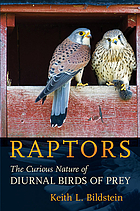 Raptors : the curious nature of diurnal birds of prey
by
Raptors are formally classified into five families and include birds--such as eagles, ospreys, kites, true hawks, buzzards, harriers, vultures, and falcons--that are familiar and recognized by many observers. These diurnal birds of prey are found on every continent except Antarctica and can thrive in seemingly inhospitable spots such as deserts and the tundra. They have powerful talons and hooked beaks for cutting and tearing meat, and keen binocular vision to aid in their hunting prowess. Because of their large size, distinctive feeding habits, and long-distance flight patterns, raptors intrigue humans and have been the subject of much general interest as well as extensive scientific research. Keith L. Bildstein has watched and studied raptors on five continents and is well prepared to explain their critical importance, not only as ecological entities but also as inspirational tokens across natural and human-dominated landscapes. His book offers a comprehensive and accessible account of raptors, including their evolutionary history, their relationships to other groups of birds, their sensory abilities, their general natural history, their breeding ecology and feeding behavior, and threats to their survival in a human-dominated world. Biologically sound but readable, Raptors is a nontechnical overview of this captivating group. It will allow naturalists, birders, hawk-watchers, science educators, schoolchildren, and the general public, along with new students in the field of raptor biology, to understand and appreciate these birds, and in so doing better protect them.
Raptors : the curious nature of diurnal birds of prey
by
Raptors are formally classified into five families and include birds--such as eagles, ospreys, kites, true hawks, buzzards, harriers, vultures, and falcons--that are familiar and recognized by many observers. These diurnal birds of prey are found on every continent except Antarctica and can thrive in seemingly inhospitable spots such as deserts and the tundra. They have powerful talons and hooked beaks for cutting and tearing meat, and keen binocular vision to aid in their hunting prowess. Because of their large size, distinctive feeding habits, and long-distance flight patterns, raptors intrigue humans and have been the subject of much general interest as well as extensive scientific research. Keith L. Bildstein has watched and studied raptors on five continents and is well prepared to explain their critical importance, not only as ecological entities but also as inspirational tokens across natural and human-dominated landscapes. His book offers a comprehensive and accessible account of raptors, including their evolutionary history, their relationships to other groups of birds, their sensory abilities, their general natural history, their breeding ecology and feeding behavior, and threats to their survival in a human-dominated world. Biologically sound but readable, Raptors is a nontechnical overview of this captivating group. It will allow naturalists, birders, hawk-watchers, science educators, schoolchildren, and the general public, along with new students in the field of raptor biology, to understand and appreciate these birds, and in so doing better protect them.
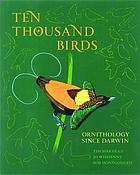 Ten Thousand Birds : Ornithology since Darwin
by
Ten Thousand Birds provides a thoroughly engaging and authoritative history of modern ornithology, tracing how the study of birds has been shaped by a succession of visionary and often-controversial personalities, and by the unique social and scientific contexts in which these extraordinary individuals worked. This beautifully illustrated book opens in the middle of the nineteenth century when ornithology was a museum-based discipline focused almost exclusively on the anatomy, taxonomy, and classification of dead birds. It describes how in the early 1900s pioneering individuals such as Erwin Stresemann, Ernst Mayr, and Julian Huxley recognized the importance of studying live birds in the field, and how this shift thrust ornithology into the mainstream of the biological sciences. The book tells the stories of eccentrics like Colonel Richard Meinertzhagen, a pathological liar who stole specimens from museums and quite likely murdered his wife, and describes the breathtaking insights and discoveries of ambitious and influential figures such as David Lack, Niko Tinbergen, Robert MacArthur, and others who through their studies of birds transformed entire fields of biology. Ten Thousand Birds brings this history vividly to life through the work and achievements of those who advanced the field. Drawing on a wealth of archival material and in-depth interviews, this fascinating book reveals how research on birds has contributed more to our understanding of animal biology than the study of just about any other group of organisms.
Ten Thousand Birds : Ornithology since Darwin
by
Ten Thousand Birds provides a thoroughly engaging and authoritative history of modern ornithology, tracing how the study of birds has been shaped by a succession of visionary and often-controversial personalities, and by the unique social and scientific contexts in which these extraordinary individuals worked. This beautifully illustrated book opens in the middle of the nineteenth century when ornithology was a museum-based discipline focused almost exclusively on the anatomy, taxonomy, and classification of dead birds. It describes how in the early 1900s pioneering individuals such as Erwin Stresemann, Ernst Mayr, and Julian Huxley recognized the importance of studying live birds in the field, and how this shift thrust ornithology into the mainstream of the biological sciences. The book tells the stories of eccentrics like Colonel Richard Meinertzhagen, a pathological liar who stole specimens from museums and quite likely murdered his wife, and describes the breathtaking insights and discoveries of ambitious and influential figures such as David Lack, Niko Tinbergen, Robert MacArthur, and others who through their studies of birds transformed entire fields of biology. Ten Thousand Birds brings this history vividly to life through the work and achievements of those who advanced the field. Drawing on a wealth of archival material and in-depth interviews, this fascinating book reveals how research on birds has contributed more to our understanding of animal biology than the study of just about any other group of organisms.
 Passions for Birds : science, sentiment, and sport
by
Whether as sources of joy and pleasure to be fed, counted, and watched, as objects of sport to be hunted and killed, or as food to be harvested, wild birds evoke strong feelings.Sean Nixon traces the transformation of these human passions for wild birds from the early twentieth century through the 1970s, detailing humans' close encounters with wild birds in Britain and the wider North Atlantic world. Drawing on a rich range of written sources, Passions for Birds reveals how emotional, subjective, and material attachments to wild birds were forged through a period of pronounced social and cultural change. Nixon demonstrates how, for all their differences, new traditions in birdwatching and conservation, field sports, and bird harvesting mobilized remarkably similar feelings towards birds. Striking similarities also emerged in the material forms that each of these practices used to bring birds closer to people - hides and traps, nets and ropes, and binoculars.Wide ranging in scope, Passions for Birds sheds new light on the ways in which wild birds helped shape humans throughout the twentieth century, as well as how birds themselves became burdened with multiple cultural meanings and social anxieties over time.
Passions for Birds : science, sentiment, and sport
by
Whether as sources of joy and pleasure to be fed, counted, and watched, as objects of sport to be hunted and killed, or as food to be harvested, wild birds evoke strong feelings.Sean Nixon traces the transformation of these human passions for wild birds from the early twentieth century through the 1970s, detailing humans' close encounters with wild birds in Britain and the wider North Atlantic world. Drawing on a rich range of written sources, Passions for Birds reveals how emotional, subjective, and material attachments to wild birds were forged through a period of pronounced social and cultural change. Nixon demonstrates how, for all their differences, new traditions in birdwatching and conservation, field sports, and bird harvesting mobilized remarkably similar feelings towards birds. Striking similarities also emerged in the material forms that each of these practices used to bring birds closer to people - hides and traps, nets and ropes, and binoculars.Wide ranging in scope, Passions for Birds sheds new light on the ways in which wild birds helped shape humans throughout the twentieth century, as well as how birds themselves became burdened with multiple cultural meanings and social anxieties over time.
 Bumble Bees of North America : an identification guide
by
The essential guide for identifying the bumble bees of North America More than ever before, there is widespread interest in studying bumble bees and the critical role they play in our ecosystems. Bumble Bees of North America is the first comprehensive guide to North American bumble bees to be published in more than a century. Richly illustrated with color photographs, diagrams, range maps, and graphs of seasonal activity patterns, this guide allows amateur and professional naturalists to identify all 46 bumble bee species found north of Mexico and to understand their ecology and changing geographic distributions. The book draws on the latest molecular research, shows the enormous color variation within species, and guides readers through the many confusing convergences between species. It draws on a large repository of data from museum collections and presents state-of-the-art results on evolutionary relationships, distributions, and ecological roles. Illustrated keys allow identification of color morphs and social castes. A landmark publication, Bumble Bees of North America sets the standard for guides and the study of these important insects. The best guide yet to the 46 recognized bumble bee species in North America north of Mexico Up-to-date taxonomy includes previously unpublished results Detailed distribution maps Extensive keys identify the many color patterns of species
Bumble Bees of North America : an identification guide
by
The essential guide for identifying the bumble bees of North America More than ever before, there is widespread interest in studying bumble bees and the critical role they play in our ecosystems. Bumble Bees of North America is the first comprehensive guide to North American bumble bees to be published in more than a century. Richly illustrated with color photographs, diagrams, range maps, and graphs of seasonal activity patterns, this guide allows amateur and professional naturalists to identify all 46 bumble bee species found north of Mexico and to understand their ecology and changing geographic distributions. The book draws on the latest molecular research, shows the enormous color variation within species, and guides readers through the many confusing convergences between species. It draws on a large repository of data from museum collections and presents state-of-the-art results on evolutionary relationships, distributions, and ecological roles. Illustrated keys allow identification of color morphs and social castes. A landmark publication, Bumble Bees of North America sets the standard for guides and the study of these important insects. The best guide yet to the 46 recognized bumble bee species in North America north of Mexico Up-to-date taxonomy includes previously unpublished results Detailed distribution maps Extensive keys identify the many color patterns of species
 Fishes: a Guide to Their Diversity
by
There are more than 33,000 species of living fishes, accounting for more than half of the extant vertebrate diversity on Earth. This unique and comprehensive reference showcases the basic anatomy and diversity of all 82 orders of fishes and more than 150 of the most commonly encountered families, focusing on their distinctive features. Accurate identification of each group, including its distinguishing characteristics, is supported with clear photographs of preserved specimens, primarily from the archives of the Marine Vertebrate Collection at Scripps Institution of Oceanography. This diagnostic information is supplemented by radiographs, additional illustrations of particularly diverse lineages, and key references and ecological information for each group. An ideal companion to primary ichthyology texts, Fishes: A Guide to Their Diversity gives a broad overview of fish morphology arranged in a modern classification system for students, fisheries scientists, marine biologists, vertebrate zoologists, and everyday naturalists. This survey of the most speciose group of vertebrates on Earth will expand the appreciation of and interest in the amazing diversity of fishes.
Fishes: a Guide to Their Diversity
by
There are more than 33,000 species of living fishes, accounting for more than half of the extant vertebrate diversity on Earth. This unique and comprehensive reference showcases the basic anatomy and diversity of all 82 orders of fishes and more than 150 of the most commonly encountered families, focusing on their distinctive features. Accurate identification of each group, including its distinguishing characteristics, is supported with clear photographs of preserved specimens, primarily from the archives of the Marine Vertebrate Collection at Scripps Institution of Oceanography. This diagnostic information is supplemented by radiographs, additional illustrations of particularly diverse lineages, and key references and ecological information for each group. An ideal companion to primary ichthyology texts, Fishes: A Guide to Their Diversity gives a broad overview of fish morphology arranged in a modern classification system for students, fisheries scientists, marine biologists, vertebrate zoologists, and everyday naturalists. This survey of the most speciose group of vertebrates on Earth will expand the appreciation of and interest in the amazing diversity of fishes.
 Encyclopedia of Insects
by
Awarded Best Reference by the New York Public Library (2004), Outstanding Academic Title by CHOICE (2003), and AAP/PSP 2003 Best Single Volume Reference/Sciences by Association of American Publishers' Professional Scholarly Publishing Division, the first edition of Encyclopedia of Insects was acclaimed as the most comprehensive work devoted to insects. Covering all aspects of insect anatomy, physiology, evolution, behavior, reproduction, ecology, and disease, as well as issues of exploitation, conservation, and management, this book sets the standard in entomology. The second edition of this reference will continue the tradition by providing the most comprehensive, useful, and up-to-date resource for professionals. Expanded sections in forensic entomology, biotechnology and Drosphila, reflect the full update of over 300 topics. Articles contributed by over 260 high profile and internationally recognized entomologists provide definitive facts regarding all insects from ants, beetles, and butterflies to yellow jackets, zoraptera, and zygentoma. 66% NEW and revised content by over 200 international experts New chapters on Bedbugs, Ekbom Syndrome, Human History, Genomics, Vinegaroons Expanded sections on insect-human interactions, genomics, biotechnology, and ecology Each of the 273 articles updated to reflect the advances which have taken place in entomology research since the previous edition Features 1,000 full-color photographs, figures and tables A full glossary, 1,700 cross-references, 3,000 bibliographic entries, and online access save research time Updated with online access
Encyclopedia of Insects
by
Awarded Best Reference by the New York Public Library (2004), Outstanding Academic Title by CHOICE (2003), and AAP/PSP 2003 Best Single Volume Reference/Sciences by Association of American Publishers' Professional Scholarly Publishing Division, the first edition of Encyclopedia of Insects was acclaimed as the most comprehensive work devoted to insects. Covering all aspects of insect anatomy, physiology, evolution, behavior, reproduction, ecology, and disease, as well as issues of exploitation, conservation, and management, this book sets the standard in entomology. The second edition of this reference will continue the tradition by providing the most comprehensive, useful, and up-to-date resource for professionals. Expanded sections in forensic entomology, biotechnology and Drosphila, reflect the full update of over 300 topics. Articles contributed by over 260 high profile and internationally recognized entomologists provide definitive facts regarding all insects from ants, beetles, and butterflies to yellow jackets, zoraptera, and zygentoma. 66% NEW and revised content by over 200 international experts New chapters on Bedbugs, Ekbom Syndrome, Human History, Genomics, Vinegaroons Expanded sections on insect-human interactions, genomics, biotechnology, and ecology Each of the 273 articles updated to reflect the advances which have taken place in entomology research since the previous edition Features 1,000 full-color photographs, figures and tables A full glossary, 1,700 cross-references, 3,000 bibliographic entries, and online access save research time Updated with online access
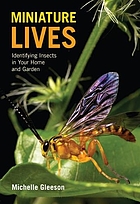 Miniature lives : identifying insects in your home and garden
by
An easy-to-use identification guide to Australian insects in your home and garden.
Miniature lives : identifying insects in your home and garden
by
An easy-to-use identification guide to Australian insects in your home and garden.
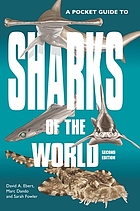 A Pocket Guide to Sharks of the World
by
An updated and comprehensive guide identifying all of the world's sharks Sharks are some of the most misunderstood animals on the planet. We still have a lot to learn about these fascinating creatures, which are more seriously threatened with extinction and in greater need of conservation and management than any other major group of vertebrates. A Pocket Guide to Sharks of the World is the only field guide to identify, illustrate, and describe every known shark species. Its compact format makes it handy for many situations, including recognizing living species, fishery catches, or parts sold at markets. This expanded second edition presents lavish images, details on newly discovered species, and updated text throughout. The book contains useful sections on identifying shark teeth and the shark fins most commonly encountered in the fin trade, and takes a look at shark biology, ecology, and conservation. A Pocket Guide to Sharks of the World will be an essential resource and definitive reference for years to come. An updated guide to all of the world's sharks Each species is illustrated and described Handy, compact format with concise text Useful sections on the identification of shark teeth and fins
A Pocket Guide to Sharks of the World
by
An updated and comprehensive guide identifying all of the world's sharks Sharks are some of the most misunderstood animals on the planet. We still have a lot to learn about these fascinating creatures, which are more seriously threatened with extinction and in greater need of conservation and management than any other major group of vertebrates. A Pocket Guide to Sharks of the World is the only field guide to identify, illustrate, and describe every known shark species. Its compact format makes it handy for many situations, including recognizing living species, fishery catches, or parts sold at markets. This expanded second edition presents lavish images, details on newly discovered species, and updated text throughout. The book contains useful sections on identifying shark teeth and the shark fins most commonly encountered in the fin trade, and takes a look at shark biology, ecology, and conservation. A Pocket Guide to Sharks of the World will be an essential resource and definitive reference for years to come. An updated guide to all of the world's sharks Each species is illustrated and described Handy, compact format with concise text Useful sections on the identification of shark teeth and fins
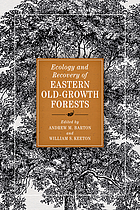 Ecology and Recovery of Eastern Old-Growth Forests
by
The landscapes of North America, including eastern forests, have been shaped by humans for millennia, through fire, agriculture, hunting, and other means. But the arrival of Europeans on America's eastern shores several centuries ago ushered in the rapid conversion of forests and woodlands to other land uses. By the twentieth century, it appeared that old-growth forests in the eastern United States were gone, replaced by cities, farms, transportation networks, and second-growth forests. Since that time, however, numerous remnants of eastern old growth have been discovered, meticulously mapped, and studied. Many of these ancient stands retain surprisingly robust complexity and vigor, and forest ecologists are eager to develop strategies for their restoration and for nurturing additional stands of old growth that will foster biological diversity, reduce impacts of climate change, and serve as benchmarks for how natural systems operate. Forest ecologists William Keeton and Andrew Barton bring together a volume that breaks new ground in our understanding of ecological systems and their importance for forest resilience in an age of rapid environmental change. This edited volume covers a broad geographic canvas, from eastern Canada and the Upper Great Lakes states to the deep South. It looks at a wide diversity of ecosystems, including spruce-fir, northern deciduous, southern Appalachian deciduous, southern swamp hardwoods, and longleaf pine. Chapters authored by leading old-growth experts examine topics of contemporary forest ecology including forest structure and dynamics, below-ground soil processes, biological diversity, differences between historical and modern forests, carbon and climate change mitigation, management of old growth, and more. This thoughtful treatise broadly communicates important new discoveries to scientists, land managers, and students and breathes fresh life into the hope for sensible, effective management of old-growth stands in eastern forests.
Ecology and Recovery of Eastern Old-Growth Forests
by
The landscapes of North America, including eastern forests, have been shaped by humans for millennia, through fire, agriculture, hunting, and other means. But the arrival of Europeans on America's eastern shores several centuries ago ushered in the rapid conversion of forests and woodlands to other land uses. By the twentieth century, it appeared that old-growth forests in the eastern United States were gone, replaced by cities, farms, transportation networks, and second-growth forests. Since that time, however, numerous remnants of eastern old growth have been discovered, meticulously mapped, and studied. Many of these ancient stands retain surprisingly robust complexity and vigor, and forest ecologists are eager to develop strategies for their restoration and for nurturing additional stands of old growth that will foster biological diversity, reduce impacts of climate change, and serve as benchmarks for how natural systems operate. Forest ecologists William Keeton and Andrew Barton bring together a volume that breaks new ground in our understanding of ecological systems and their importance for forest resilience in an age of rapid environmental change. This edited volume covers a broad geographic canvas, from eastern Canada and the Upper Great Lakes states to the deep South. It looks at a wide diversity of ecosystems, including spruce-fir, northern deciduous, southern Appalachian deciduous, southern swamp hardwoods, and longleaf pine. Chapters authored by leading old-growth experts examine topics of contemporary forest ecology including forest structure and dynamics, below-ground soil processes, biological diversity, differences between historical and modern forests, carbon and climate change mitigation, management of old growth, and more. This thoughtful treatise broadly communicates important new discoveries to scientists, land managers, and students and breathes fresh life into the hope for sensible, effective management of old-growth stands in eastern forests.
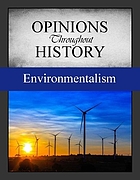 The environment
by
This book examines shifting public opinion on the environment throughout history, and traces the path of how Americans think about the environment, with each chapter providing insightful commentary on a selected primary source. A comprehensive timeline of significant events related to environmental history and regulation from antiquity to 2018, as well as sidebars that offer valuable background information, are also included.
The environment
by
This book examines shifting public opinion on the environment throughout history, and traces the path of how Americans think about the environment, with each chapter providing insightful commentary on a selected primary source. A comprehensive timeline of significant events related to environmental history and regulation from antiquity to 2018, as well as sidebars that offer valuable background information, are also included.
 Energy Sprawl Solutions: balancing global development and conservation
by
Over the next several decades, as human populations grow and developing countries become more affluent, the demand for energy will soar. Parts of the energy sector are preparing to meet this demand by increasing renewable energy production, which is necessary to combat climate change. But many renewable energy sources have a large energy sprawl--the amount of land needed to produce energy--which can threaten biodiversity and conservation. Is it possible to meet this rise in energy demand, while still conserving natural places and species? In Energy Sprawl Solutions, scientists Joseph M. Kiesecker and David Naugle provide a roadmap for preserving biodiversity despite the threats of energy sprawl. Their strategy--development by design--brings together companies, communities, and governments to craft blueprints for sustainable land development. This commonsense approach identifies and preemptively sets aside land where biodiversity can thrive while consolidating development in areas with lower biodiversity value. This approach makes sense for energy industries and governments, which can confidently build sustainability into their energy futures. This contributed volume brings together experts in diverse fields such as biodiversity conservation, ecology, ecosystem services, wildlife, fisheries, planning, energy, economics, and finance. Early chapters set the context for global patterns of biodiversity risk from energy extraction and the challenges of achieving a green future while maintaining energy security. Middle chapters are devoted to case studies from countries around the world, each describing a different energy sector and the collaborative process involved in planning complex energy projects in a way that maximizes biodiversity protection. Detailed maps and charts help orient readers to countries and energy sectors, providing proof for what is possible. With biodiversity declining rapidly because of an energy-hungry world, this book provides a needed guide for elected officials, industry representatives, NGOs and community groups who have a stake in sustainable energy-development planning.
Energy Sprawl Solutions: balancing global development and conservation
by
Over the next several decades, as human populations grow and developing countries become more affluent, the demand for energy will soar. Parts of the energy sector are preparing to meet this demand by increasing renewable energy production, which is necessary to combat climate change. But many renewable energy sources have a large energy sprawl--the amount of land needed to produce energy--which can threaten biodiversity and conservation. Is it possible to meet this rise in energy demand, while still conserving natural places and species? In Energy Sprawl Solutions, scientists Joseph M. Kiesecker and David Naugle provide a roadmap for preserving biodiversity despite the threats of energy sprawl. Their strategy--development by design--brings together companies, communities, and governments to craft blueprints for sustainable land development. This commonsense approach identifies and preemptively sets aside land where biodiversity can thrive while consolidating development in areas with lower biodiversity value. This approach makes sense for energy industries and governments, which can confidently build sustainability into their energy futures. This contributed volume brings together experts in diverse fields such as biodiversity conservation, ecology, ecosystem services, wildlife, fisheries, planning, energy, economics, and finance. Early chapters set the context for global patterns of biodiversity risk from energy extraction and the challenges of achieving a green future while maintaining energy security. Middle chapters are devoted to case studies from countries around the world, each describing a different energy sector and the collaborative process involved in planning complex energy projects in a way that maximizes biodiversity protection. Detailed maps and charts help orient readers to countries and energy sectors, providing proof for what is possible. With biodiversity declining rapidly because of an energy-hungry world, this book provides a needed guide for elected officials, industry representatives, NGOs and community groups who have a stake in sustainable energy-development planning.
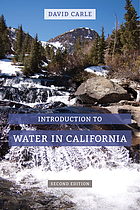 Introduction to Water in California
by
This thoroughly engaging, concise book tells the story of California's most precious resource, tracing the journey of water in the state from the atmosphere to the snowpack to our faucets and foods. Along the way, we learn much about California itself as the book describes its rivers, lakes, wetlands, dams, and aqueducts and discusses the role of water in agriculture, the environment, and politics. Essential reading in a state facing the future with an overextended water supply, this fascinating book shows that, for all Californians, every drop counts. New to this updated edition: * Additional maps, figures, and photos * Expanded coverage of potential impacts to precipitation, snowpack, and water supply from climate change * Updated information about the struggle for water management and potential solutions * New content about sustainable groundwater use and regulation, desalination, water recycling, stormwater capture, and current proposals for water storage and diversion *Additional table summarizing water sources for 360 California cities and towns
Introduction to Water in California
by
This thoroughly engaging, concise book tells the story of California's most precious resource, tracing the journey of water in the state from the atmosphere to the snowpack to our faucets and foods. Along the way, we learn much about California itself as the book describes its rivers, lakes, wetlands, dams, and aqueducts and discusses the role of water in agriculture, the environment, and politics. Essential reading in a state facing the future with an overextended water supply, this fascinating book shows that, for all Californians, every drop counts. New to this updated edition: * Additional maps, figures, and photos * Expanded coverage of potential impacts to precipitation, snowpack, and water supply from climate change * Updated information about the struggle for water management and potential solutions * New content about sustainable groundwater use and regulation, desalination, water recycling, stormwater capture, and current proposals for water storage and diversion *Additional table summarizing water sources for 360 California cities and towns
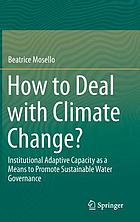 How to Deal with Climate Change? : institutional adaptive capacity as a means to promote sustainable water governance
by
As the evidence for human-induced climate change becomes more obvious, so too does the realisation that it will harshly impact on the natural environment as well as on socio-economic systems. Addressing the unpredictability of multiple sources of global change makes the capacity of governance systems to deal with uncertainty and surprise essential. However, how all these complex processes act in concert and under which conditions they lead to the sustainable governance of environmental resources are questions that have remained relatively unanswered. This book aims at addressing this fundamental gap, using as case examples the basins of the Po River in Northern Italy and the Syr Darya River in Kyrgyzstan. The opening chapter addresses the challenges of governing water in times of climate and other changes. Chapter Two reviews water governance through history and science. The third chapter outlines a conceptual framework for studying institutional adaptive capacity. The next two chapters offer detailed case studies of the Po and Syr Darya rivers, followed by a chapter-length analysis and comparison of adaptive water resources management in the two regions. The discussion includes a description of resistant, reactive and proactive institutions and puts forward ideas on how water governance regimes can transition from resistant to proactive. The final chapter takes a high-level view of lessons learned and how to transform these into policy recommendations and offers a perspective on embracing uncertainty and meeting future challenges.
How to Deal with Climate Change? : institutional adaptive capacity as a means to promote sustainable water governance
by
As the evidence for human-induced climate change becomes more obvious, so too does the realisation that it will harshly impact on the natural environment as well as on socio-economic systems. Addressing the unpredictability of multiple sources of global change makes the capacity of governance systems to deal with uncertainty and surprise essential. However, how all these complex processes act in concert and under which conditions they lead to the sustainable governance of environmental resources are questions that have remained relatively unanswered. This book aims at addressing this fundamental gap, using as case examples the basins of the Po River in Northern Italy and the Syr Darya River in Kyrgyzstan. The opening chapter addresses the challenges of governing water in times of climate and other changes. Chapter Two reviews water governance through history and science. The third chapter outlines a conceptual framework for studying institutional adaptive capacity. The next two chapters offer detailed case studies of the Po and Syr Darya rivers, followed by a chapter-length analysis and comparison of adaptive water resources management in the two regions. The discussion includes a description of resistant, reactive and proactive institutions and puts forward ideas on how water governance regimes can transition from resistant to proactive. The final chapter takes a high-level view of lessons learned and how to transform these into policy recommendations and offers a perspective on embracing uncertainty and meeting future challenges.
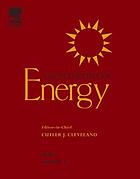 Encyclopedia of energy
by
In recent years our usage and understanding of different types of energy has grown at a tremendous rate. The editor-in-chief, Cutler Cleveland, and his international team of associate editors have brought together approximately 400 authors to produce the Encyclopedia of Energy. This highly topical reference draws together all aspects of energy, covering a wealth of areas throughout the natural, social and engineering sciences. The Encyclopedia will provide easily accessible information about all aspects of energy, written by leading international authorities. It will not only be indispensible for academics, researchers, professionals and students, but also for policy makers, energy and environmental consultants, and all those working in business corporations and non-governmental organisations whose activities relate to energy and the environment. Also available online via ScienceDirect featuring extensive browsing, searching, and internal cross-referencing between articles in the work, plus dynamic linking to journal articles and abstract databases, making navigation flexible and easy. For more information, pricing options and availability visit www.info.sciencedirect.com. An invaluable resource for all academics, researchers, professionals and students either working in or conducting research in energy and related environmental fields An A-Z of energy, covering environmental and renewable energy through to fossil fuels and nuclear power.
Encyclopedia of energy
by
In recent years our usage and understanding of different types of energy has grown at a tremendous rate. The editor-in-chief, Cutler Cleveland, and his international team of associate editors have brought together approximately 400 authors to produce the Encyclopedia of Energy. This highly topical reference draws together all aspects of energy, covering a wealth of areas throughout the natural, social and engineering sciences. The Encyclopedia will provide easily accessible information about all aspects of energy, written by leading international authorities. It will not only be indispensible for academics, researchers, professionals and students, but also for policy makers, energy and environmental consultants, and all those working in business corporations and non-governmental organisations whose activities relate to energy and the environment. Also available online via ScienceDirect featuring extensive browsing, searching, and internal cross-referencing between articles in the work, plus dynamic linking to journal articles and abstract databases, making navigation flexible and easy. For more information, pricing options and availability visit www.info.sciencedirect.com. An invaluable resource for all academics, researchers, professionals and students either working in or conducting research in energy and related environmental fields An A-Z of energy, covering environmental and renewable energy through to fossil fuels and nuclear power.
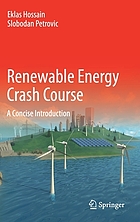 Renewable Energy Crash Course : a concise introduction
by
This book is a concise reader-friendly introductory guide to understanding renewable energy technologies. By using simplified classroom-tested methods developed while teaching the subject to engineering students, the authors explain in simple language an otherwise complex subject in terms that enable readers to gain a rapid fundamental understanding of renewable energy, including basic principles, the different types, energy storage, grid integration, and economies. This powerful tutorial is a great resource for students, engineers, technicians, analysts, investors, and other busy professionals who need to quickly acquire a solid understanding of the science of renewable energy technology.
Renewable Energy Crash Course : a concise introduction
by
This book is a concise reader-friendly introductory guide to understanding renewable energy technologies. By using simplified classroom-tested methods developed while teaching the subject to engineering students, the authors explain in simple language an otherwise complex subject in terms that enable readers to gain a rapid fundamental understanding of renewable energy, including basic principles, the different types, energy storage, grid integration, and economies. This powerful tutorial is a great resource for students, engineers, technicians, analysts, investors, and other busy professionals who need to quickly acquire a solid understanding of the science of renewable energy technology.
 Energy and Civilization : a history
by
A comprehensive account of how energy has shaped society throughout history, from pre-agricultural foraging societies through today's fossil fuel-driven civilization. "I wait for new Smil books the way some people wait for the next 'Star Wars' movie. In his latest book, Energy and Civilization: A History, he goes deep and broad to explain how innovations in humans' ability to turn energy into heat, light, and motion have been a driving force behind our cultural and economic progress over the past 10,000 years. --Bill Gates, Gates Notes, Best Books of the Year Energy is the only universal currency; it is necessary for getting anything done. The conversion of energy on Earth ranges from terra-forming forces of plate tectonics to cumulative erosive effects of raindrops. Life on Earth depends on the photosynthetic conversion of solar energy into plant biomass. Humans have come to rely on many more energy flows--ranging from fossil fuels to photovoltaic generation of electricity--for their civilized existence. In this monumental history, Vaclav Smil provides a comprehensive account of how energy has shaped society, from pre-agricultural foraging societies through today's fossil fuel-driven civilization. Humans are the only species that can systematically harness energies outside their bodies, using the power of their intellect and an enormous variety of artifacts--from the simplest tools to internal combustion engines and nuclear reactors. The epochal transition to fossil fuels affected everything: agriculture, industry, transportation, weapons, communication, economics, urbanization, quality of life, politics, and the environment. Smil describes humanity's energy eras in panoramic and interdisciplinary fashion, offering readers a magisterial overview. This book is an extensively updated and expanded version of Smil's Energy in World History (1994). Smil has incorporated an enormous amount of new material, reflecting the dramatic developments in energy studies over the last two decades and his own research over that time.
Energy and Civilization : a history
by
A comprehensive account of how energy has shaped society throughout history, from pre-agricultural foraging societies through today's fossil fuel-driven civilization. "I wait for new Smil books the way some people wait for the next 'Star Wars' movie. In his latest book, Energy and Civilization: A History, he goes deep and broad to explain how innovations in humans' ability to turn energy into heat, light, and motion have been a driving force behind our cultural and economic progress over the past 10,000 years. --Bill Gates, Gates Notes, Best Books of the Year Energy is the only universal currency; it is necessary for getting anything done. The conversion of energy on Earth ranges from terra-forming forces of plate tectonics to cumulative erosive effects of raindrops. Life on Earth depends on the photosynthetic conversion of solar energy into plant biomass. Humans have come to rely on many more energy flows--ranging from fossil fuels to photovoltaic generation of electricity--for their civilized existence. In this monumental history, Vaclav Smil provides a comprehensive account of how energy has shaped society, from pre-agricultural foraging societies through today's fossil fuel-driven civilization. Humans are the only species that can systematically harness energies outside their bodies, using the power of their intellect and an enormous variety of artifacts--from the simplest tools to internal combustion engines and nuclear reactors. The epochal transition to fossil fuels affected everything: agriculture, industry, transportation, weapons, communication, economics, urbanization, quality of life, politics, and the environment. Smil describes humanity's energy eras in panoramic and interdisciplinary fashion, offering readers a magisterial overview. This book is an extensively updated and expanded version of Smil's Energy in World History (1994). Smil has incorporated an enormous amount of new material, reflecting the dramatic developments in energy studies over the last two decades and his own research over that time.
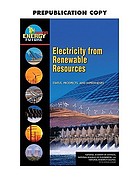 Electricity from Renewable Resources: status, prospects, and impediments
by
A component in the America's Energy Future study, Electricity from Renewable Resources examines the technical potential for electric power generation with alternative sources such as wind, solar-photovoltaic, geothermal, solar-thermal, hydroelectric, and other renewable sources. The book focuses on those renewable sources that show the most promise for initial commercial deployment within 10 years and will lead to a substantial impact on the U.S. energy system. A quantitative characterization of technologies, this book lays out expectations of costs, performance, and impacts, as well as barriers and research and development needs. In addition to a principal focus on renewable energy technologies for power generation, the book addresses the challenges of incorporating such technologies into the power grid, as well as potential improvements in the national electricity grid that could enable better and more extensive utilization of wind, solar-thermal, solar photovoltaics, and other renewable technologies.
Electricity from Renewable Resources: status, prospects, and impediments
by
A component in the America's Energy Future study, Electricity from Renewable Resources examines the technical potential for electric power generation with alternative sources such as wind, solar-photovoltaic, geothermal, solar-thermal, hydroelectric, and other renewable sources. The book focuses on those renewable sources that show the most promise for initial commercial deployment within 10 years and will lead to a substantial impact on the U.S. energy system. A quantitative characterization of technologies, this book lays out expectations of costs, performance, and impacts, as well as barriers and research and development needs. In addition to a principal focus on renewable energy technologies for power generation, the book addresses the challenges of incorporating such technologies into the power grid, as well as potential improvements in the national electricity grid that could enable better and more extensive utilization of wind, solar-thermal, solar photovoltaics, and other renewable technologies.